 Pabbly Connect
Pabbly Connect
Seamless automation awaits you with our Pabbly Connect Integration! ⚙️
Introduction:
Welcome to Picnie, where we make image generation a seamless process. In this step-by-step guide, we will show you how to integrate Picnie with Pabbly Connect, allowing you to automate the storage of generated images in a Google Sheet. This integration opens up endless possibilities for sharing, tracking, and utilizing your visual content.
Step 1: Accessing Picnie Dashboard
Begin by logging in to your Picnie account. You can use your email and password or opt for the quick Google login option.

Step 2: Exploring the Picnie Dashboard
Once logged in, familiarize yourself with the Picnie dashboard. Our integration begins by setting up a webhook. To do this, locate the "Webhooks" option in the left sidebar menu.
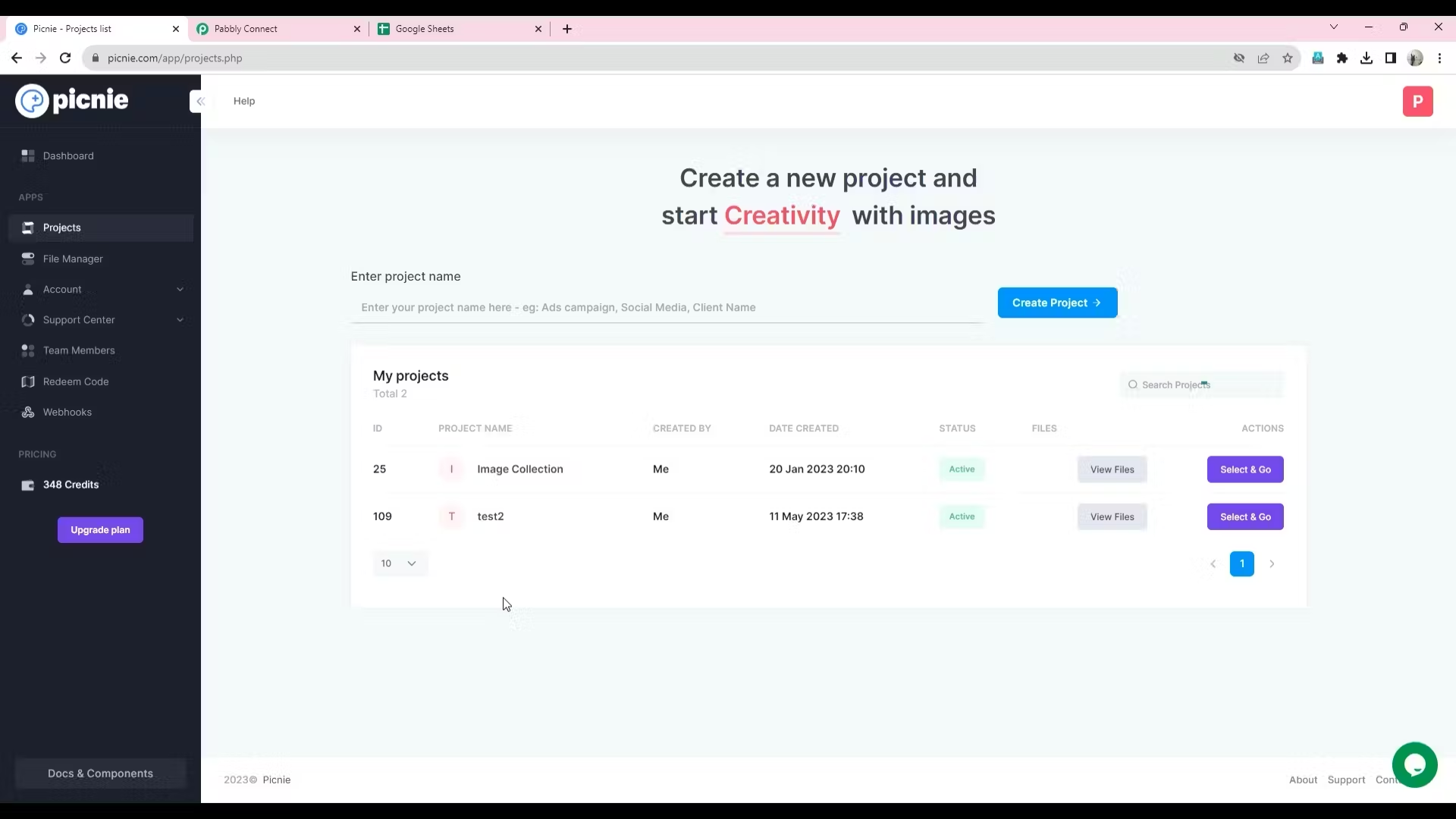
Step 3: Understanding Webhooks
Webhooks in Picnie serve as notification systems. When specific events occur within Picnie, they trigger HTTP POST requests to predefined URLs in other applications. These external applications process the data contained in the webhook payload and take actions accordingly.
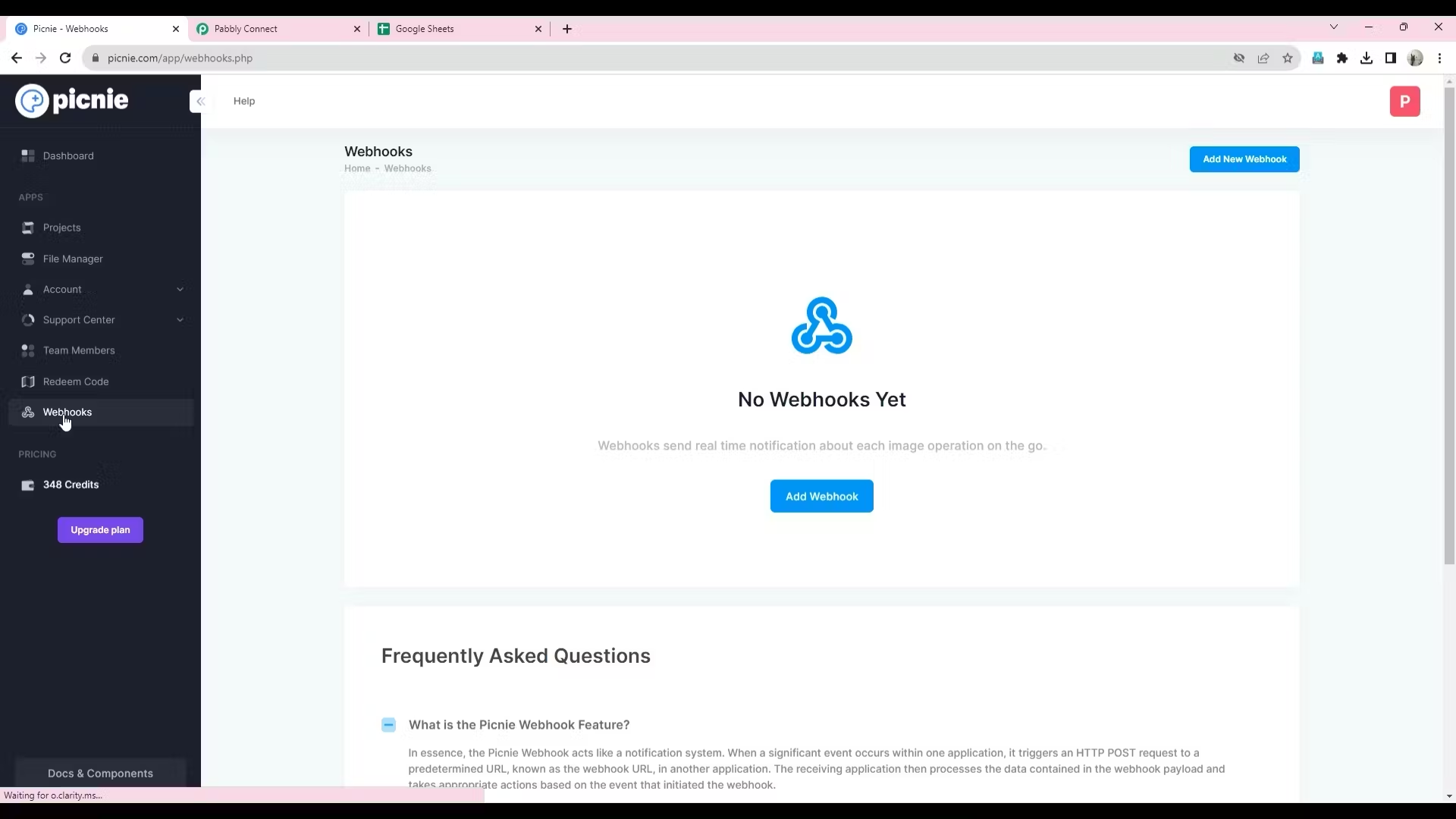
Step 4: Creating a Webhook
To create a webhook, click on the "Add Webhook" option and give it a meaningful name.
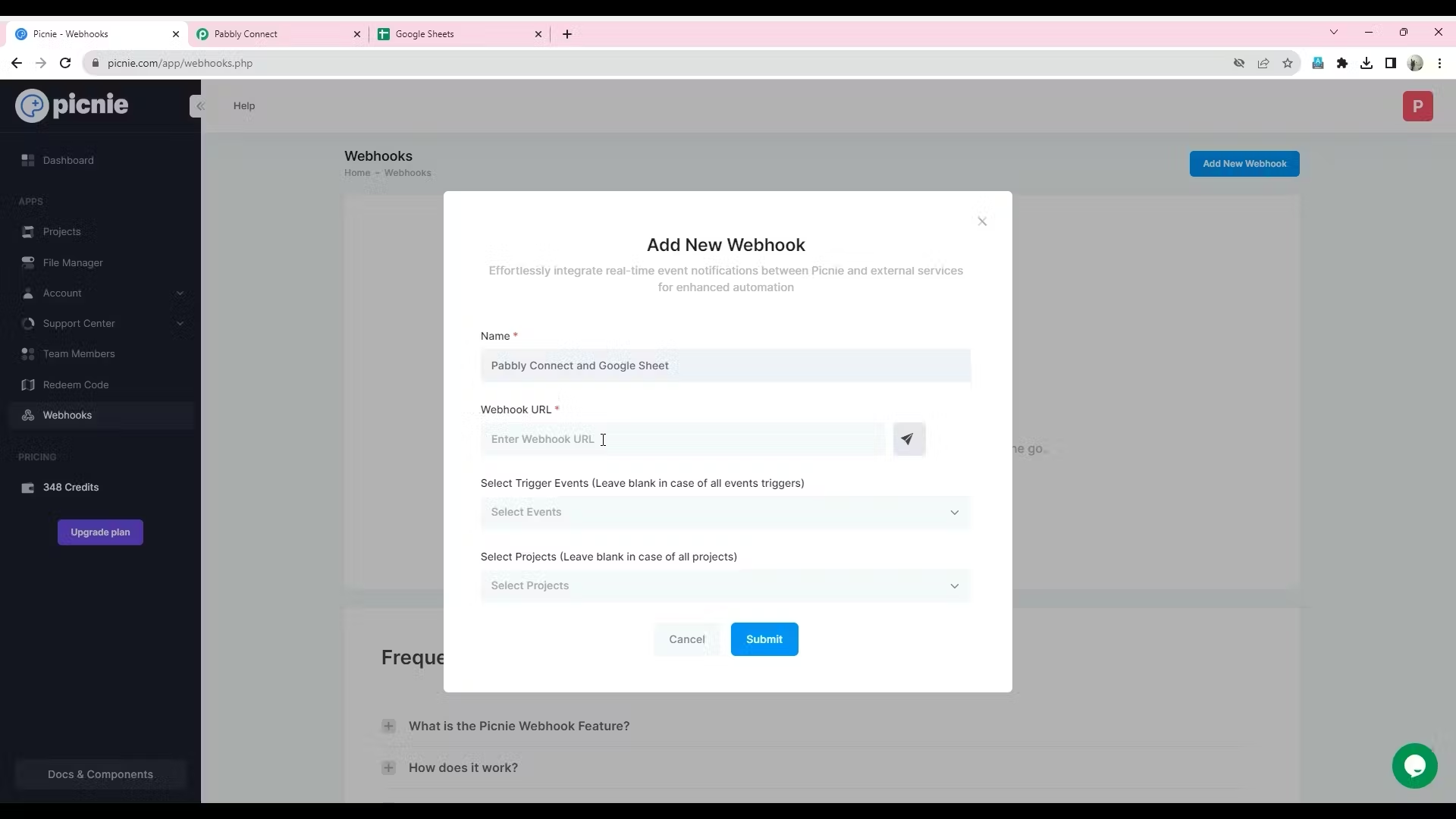
In our case, we want to store data in Google Sheets, so let's create a Google Sheet with the relevant fields in a new tab.
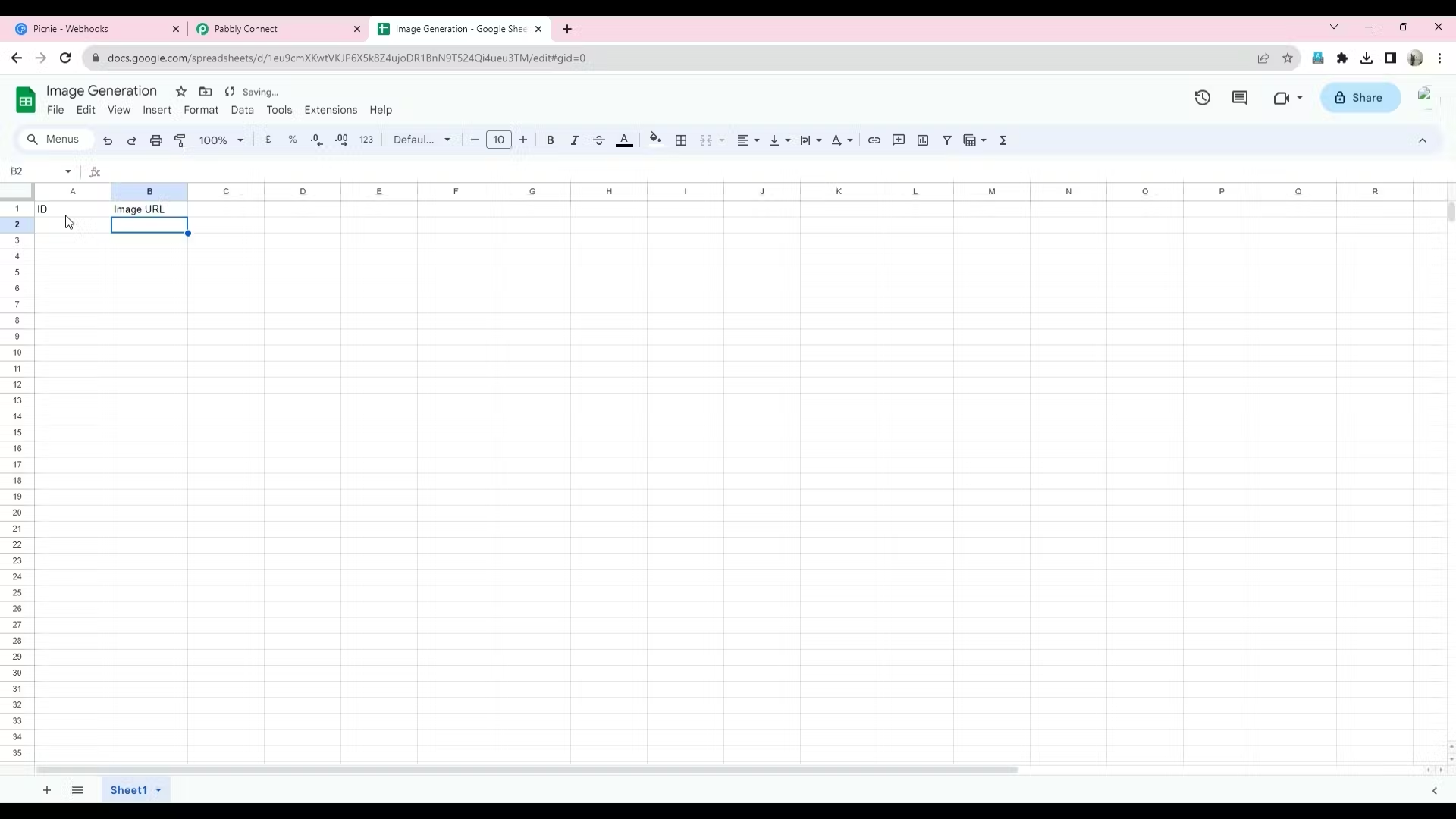
Step 5: Setting Up Pabbly Connect
Open a new tab and navigate to Pabbly Connect. In the Pabbly Connect dashboard, look for the option to create a workflow and click on it. Give your workflow a descriptive name.
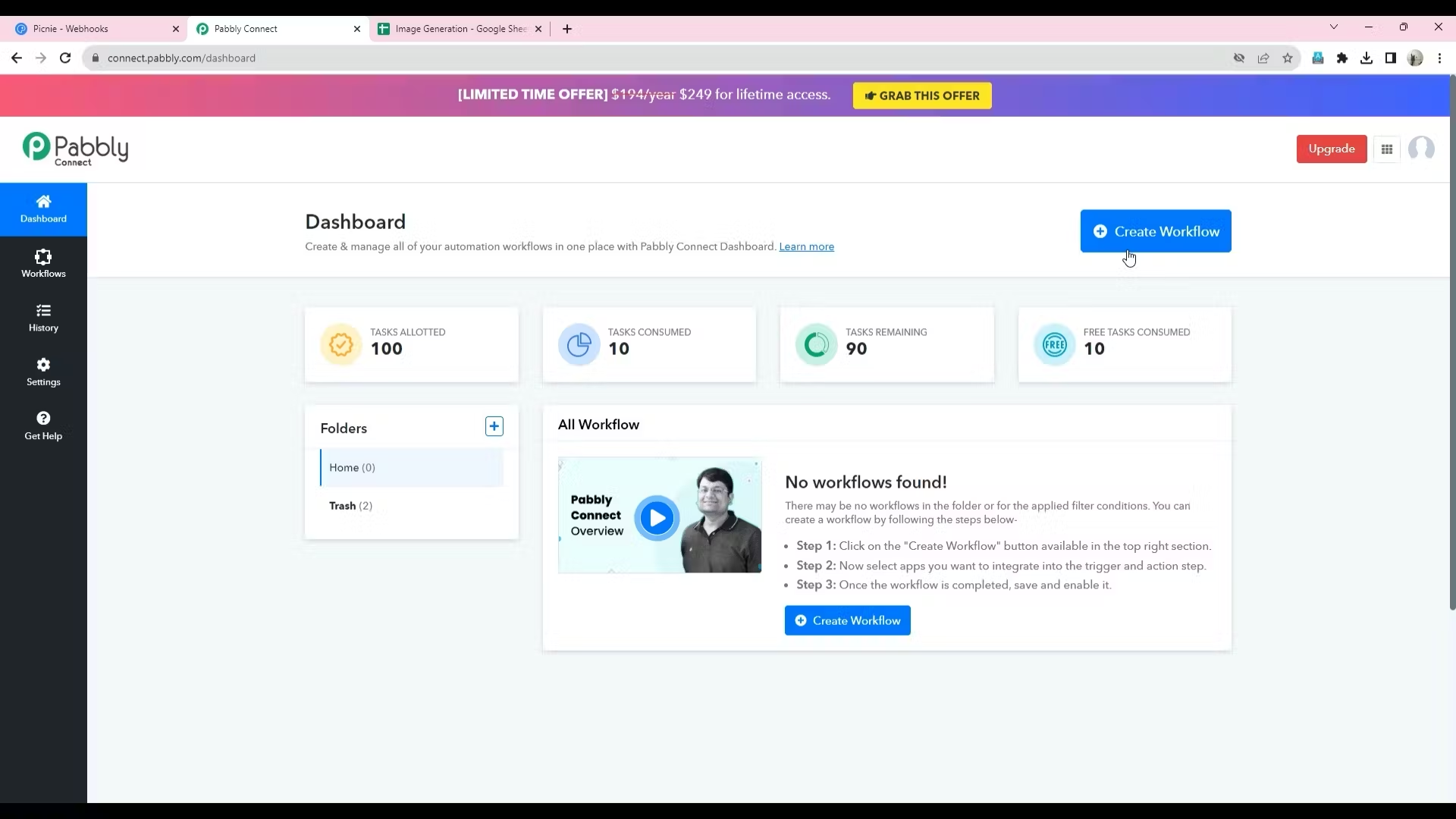
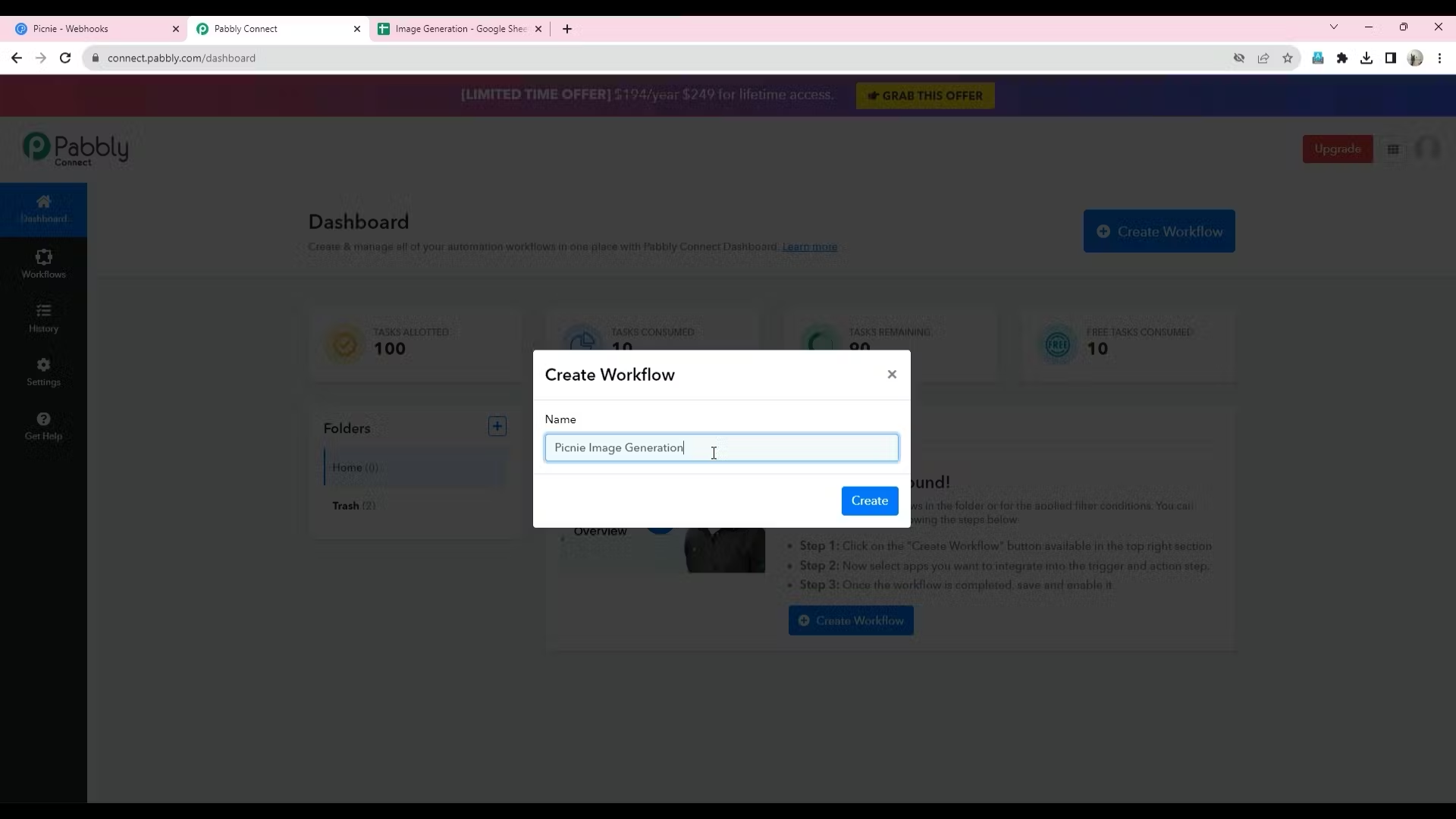
Step 6: Configuring the Trigger
In the workflow setup, the first step is to set the trigger. Choose the "Webhook" option from the list of applications.
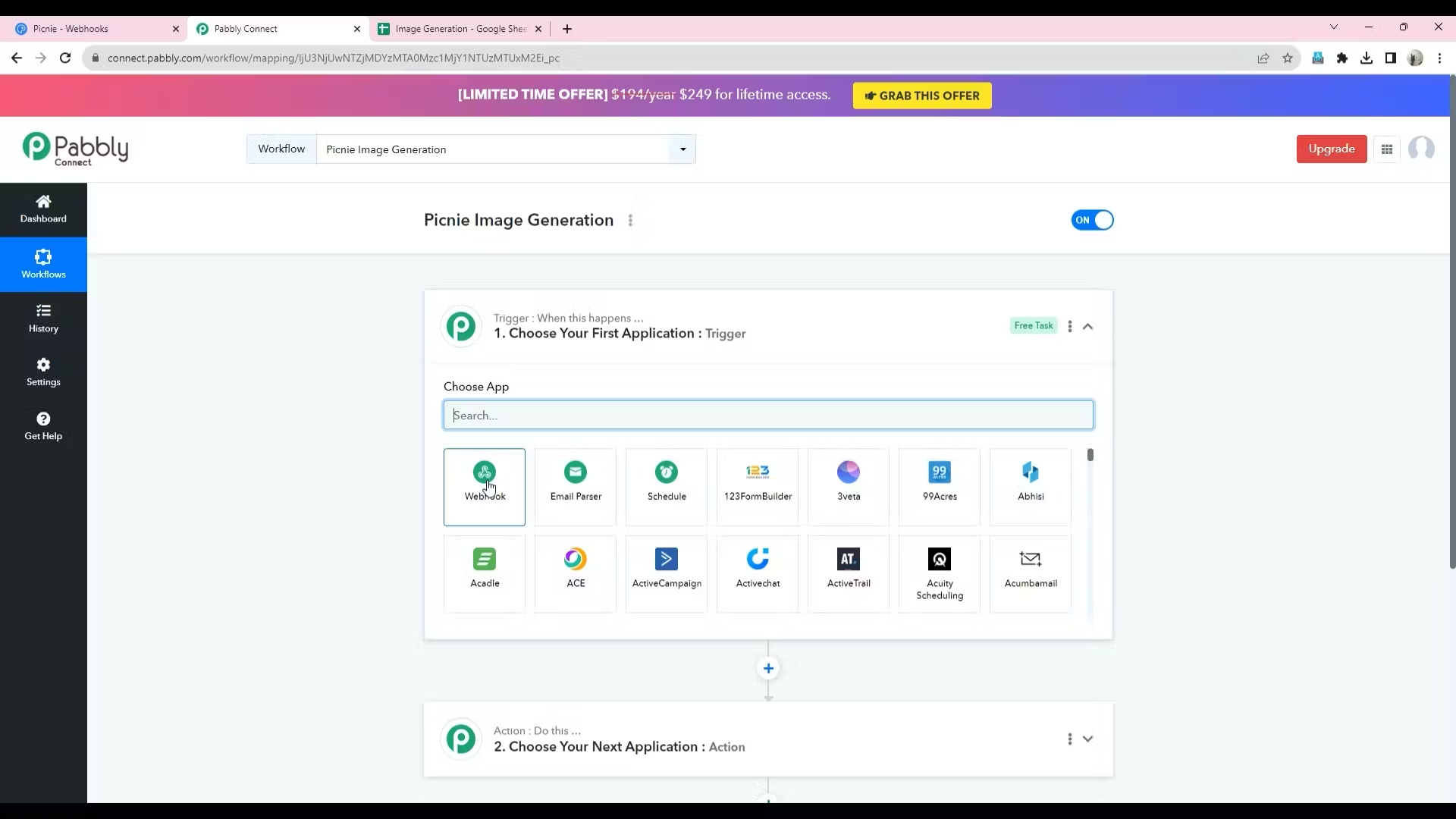
Pabbly Connect will provide a webhook URL. Copy this URL to your clipboard.
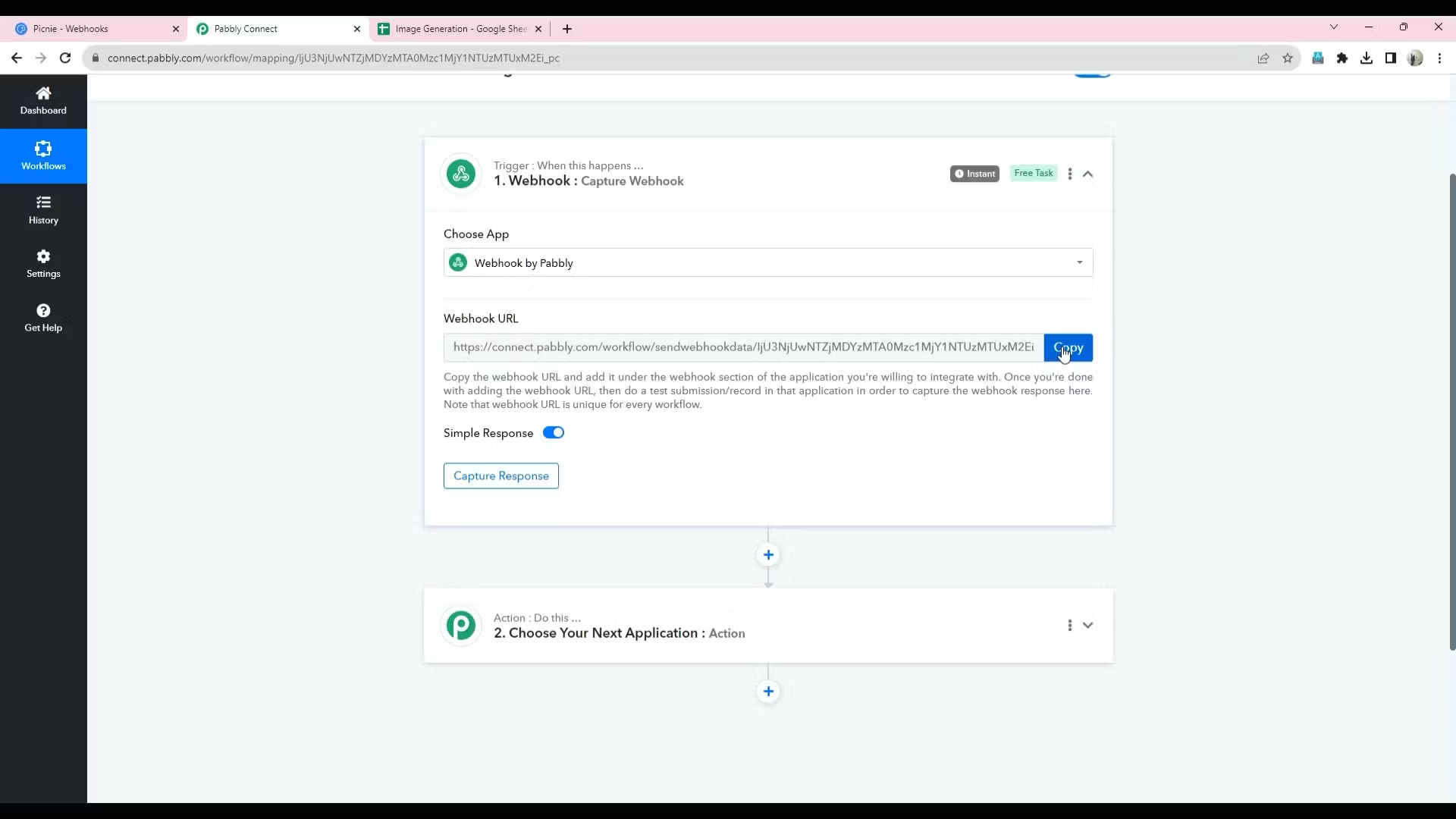
Step 7: Connecting Picnie to Pabbly Connect
Return to the Picnie dashboard, paste the webhook URL in the Webhook textbox.
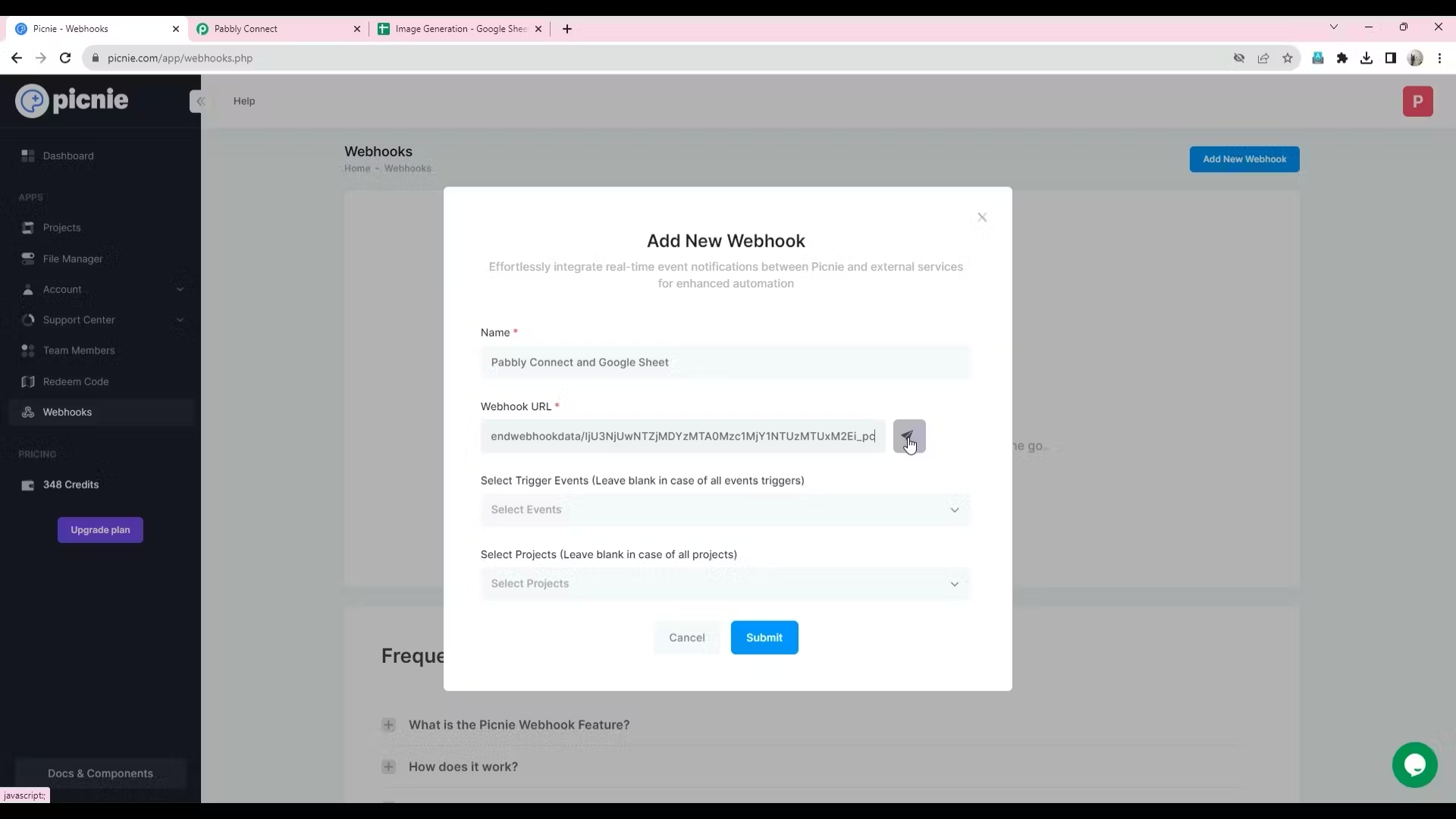
Test the connection by sending sample data to the webhook URL and check the sample response on the Pabbly Connect dashboard.
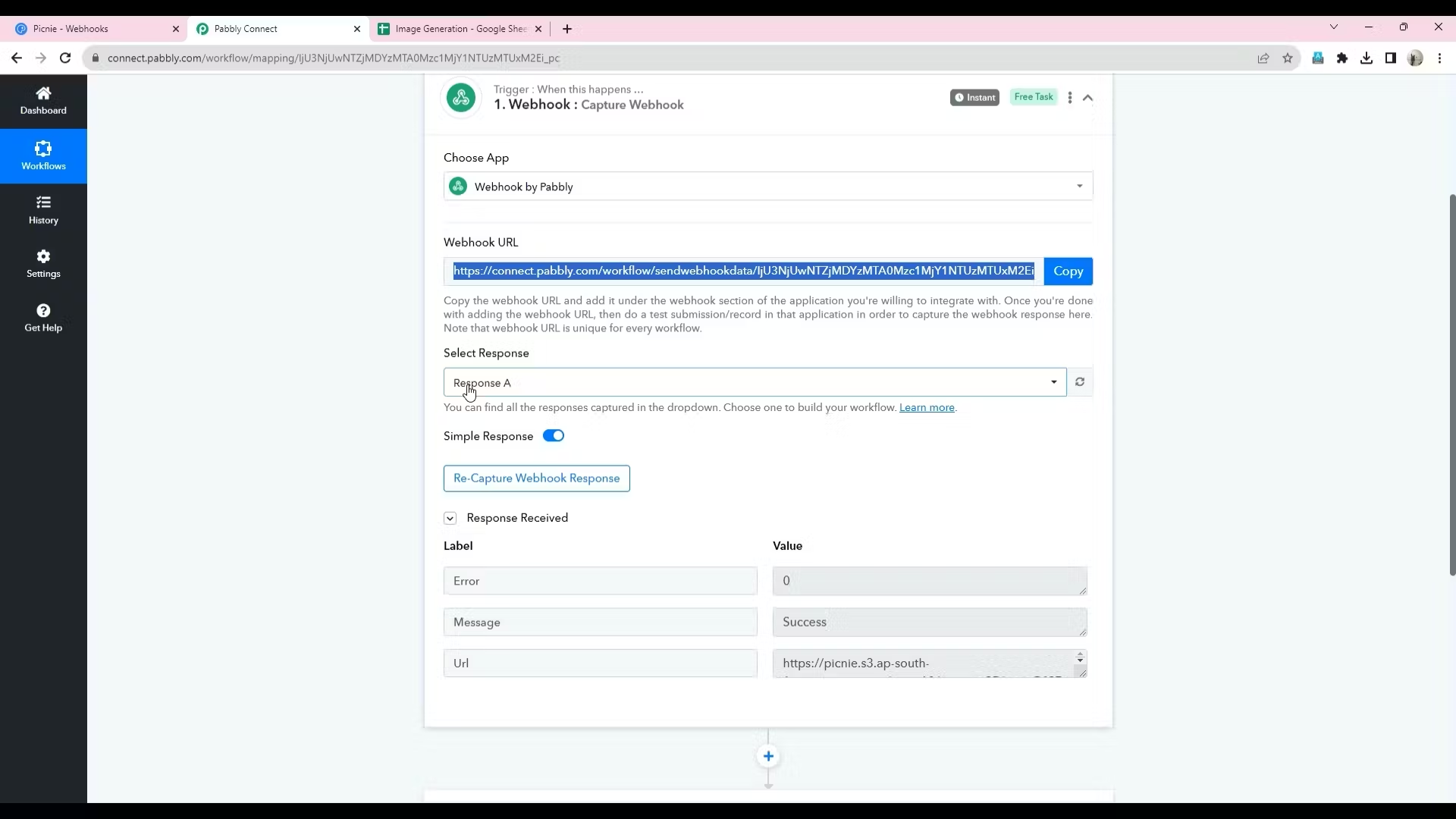
Step 8: Mapping Data
The Picnie webhook response includes three parameters: Error, Message, and URL. An Error value of 0 indicates that the API is functioning correctly, and the URL field contains the generated image URL
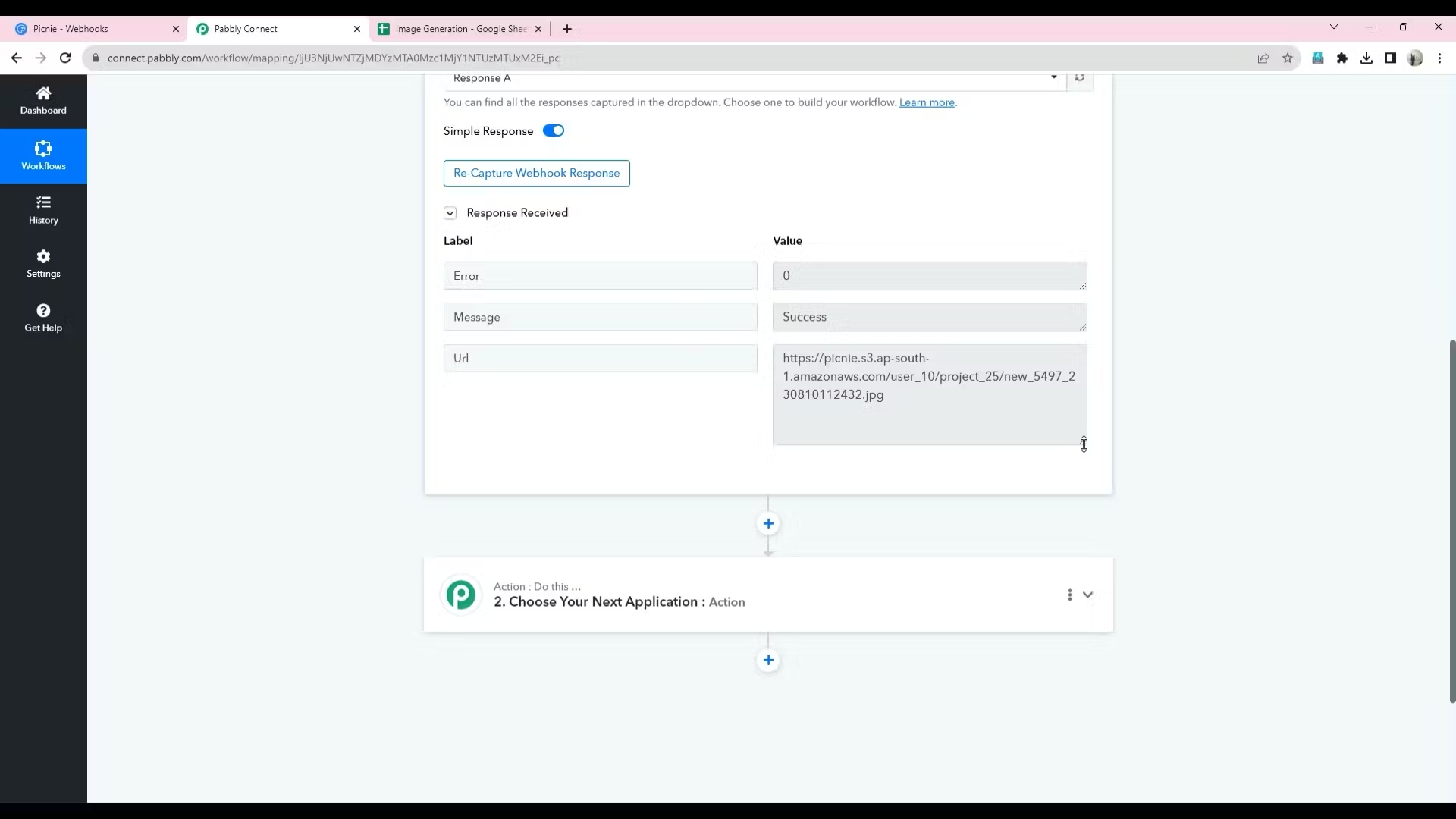
Map this data to Google Sheets. Search for "Google Sheets" among the available applications in Pabbly Connect. Select the "Add New Row" action event.
Click "Connect" and choose an existing Google account or connect a new one.
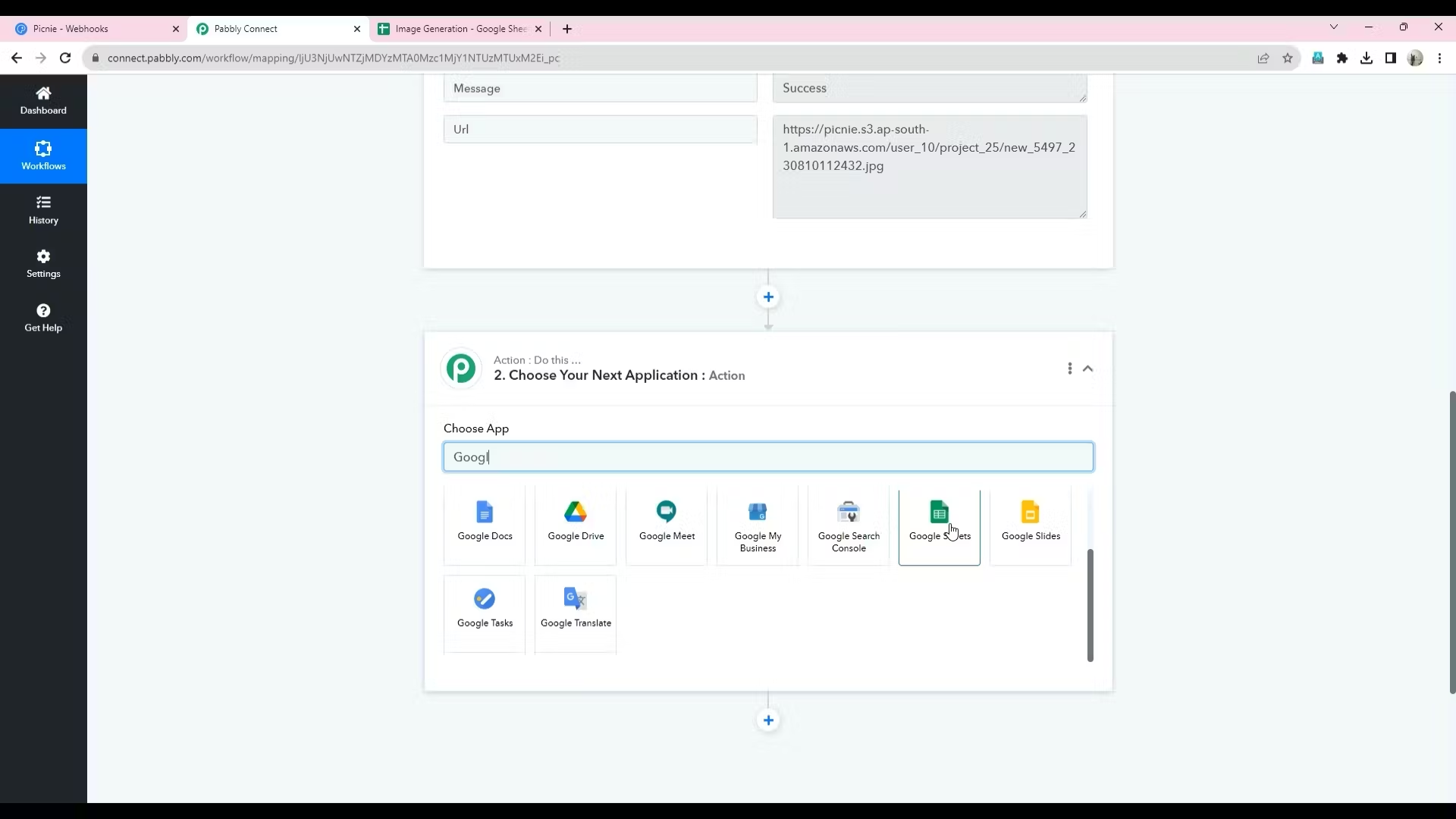
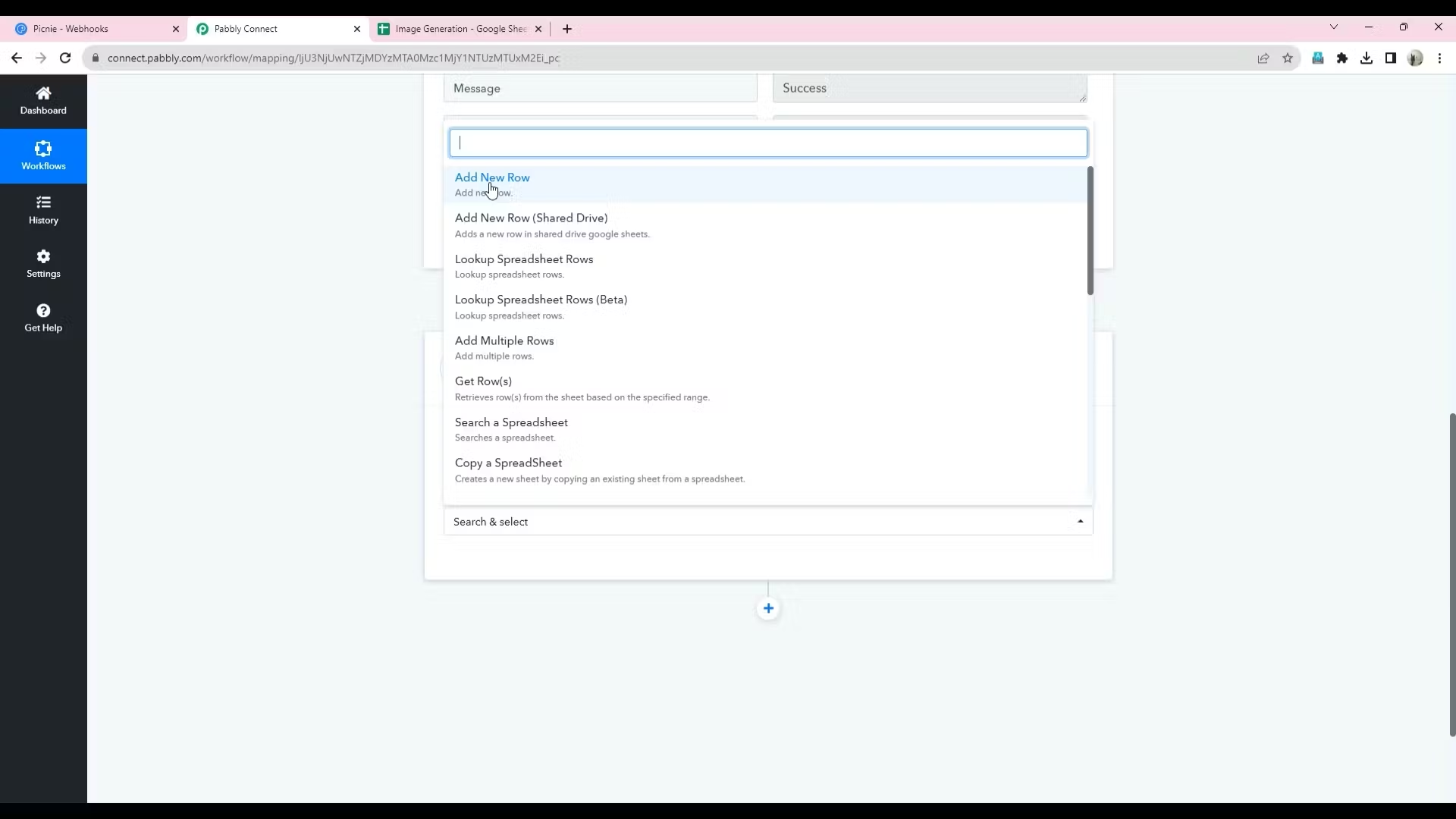
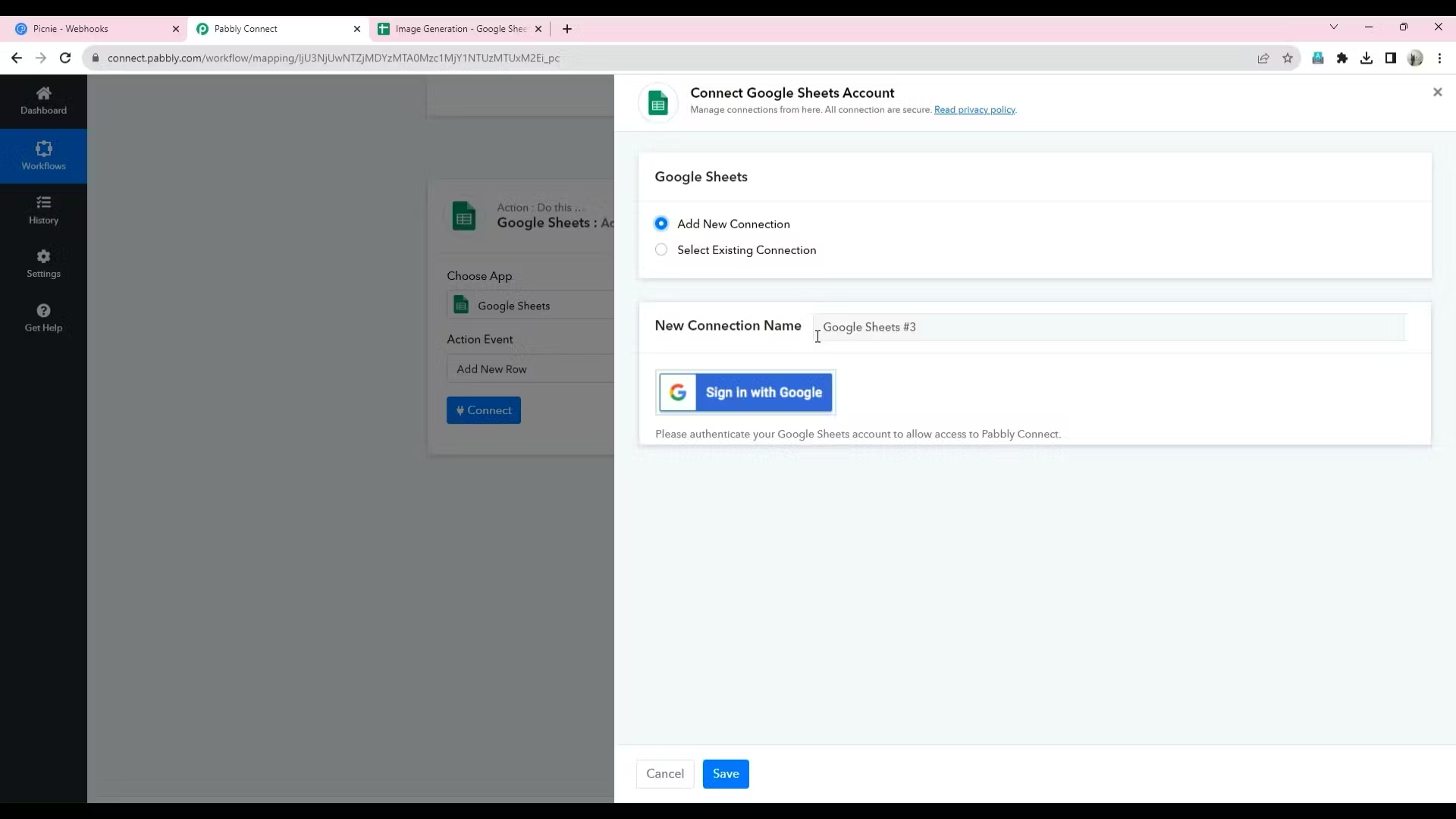
Step 9: Configuring Google Sheets Integration
Select the Google Sheet you created earlier
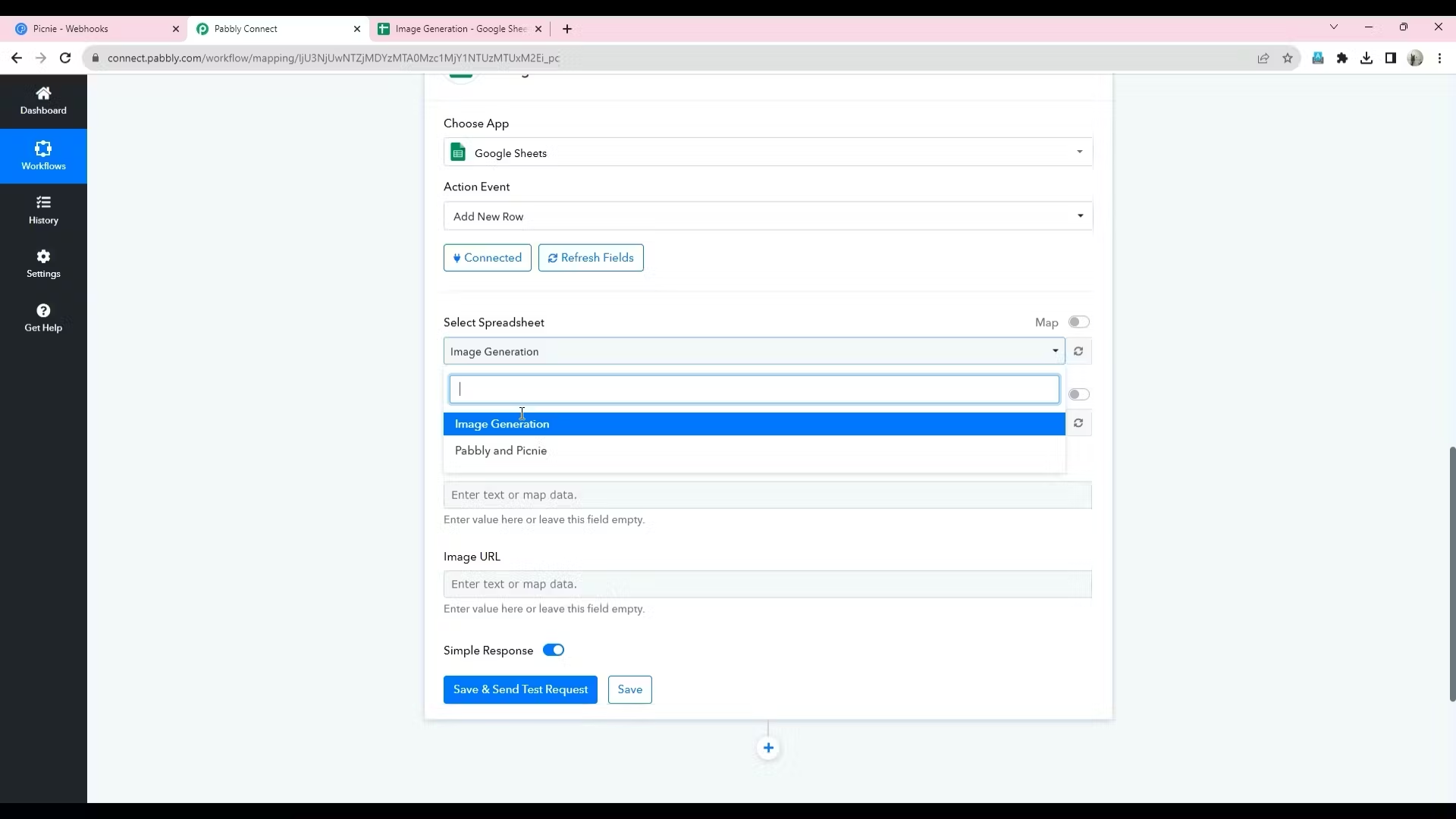
Map the columns in the Google Sheet to the fields from the Picnie webhook response. For instance, link the Image URL column to the URL field in the response.
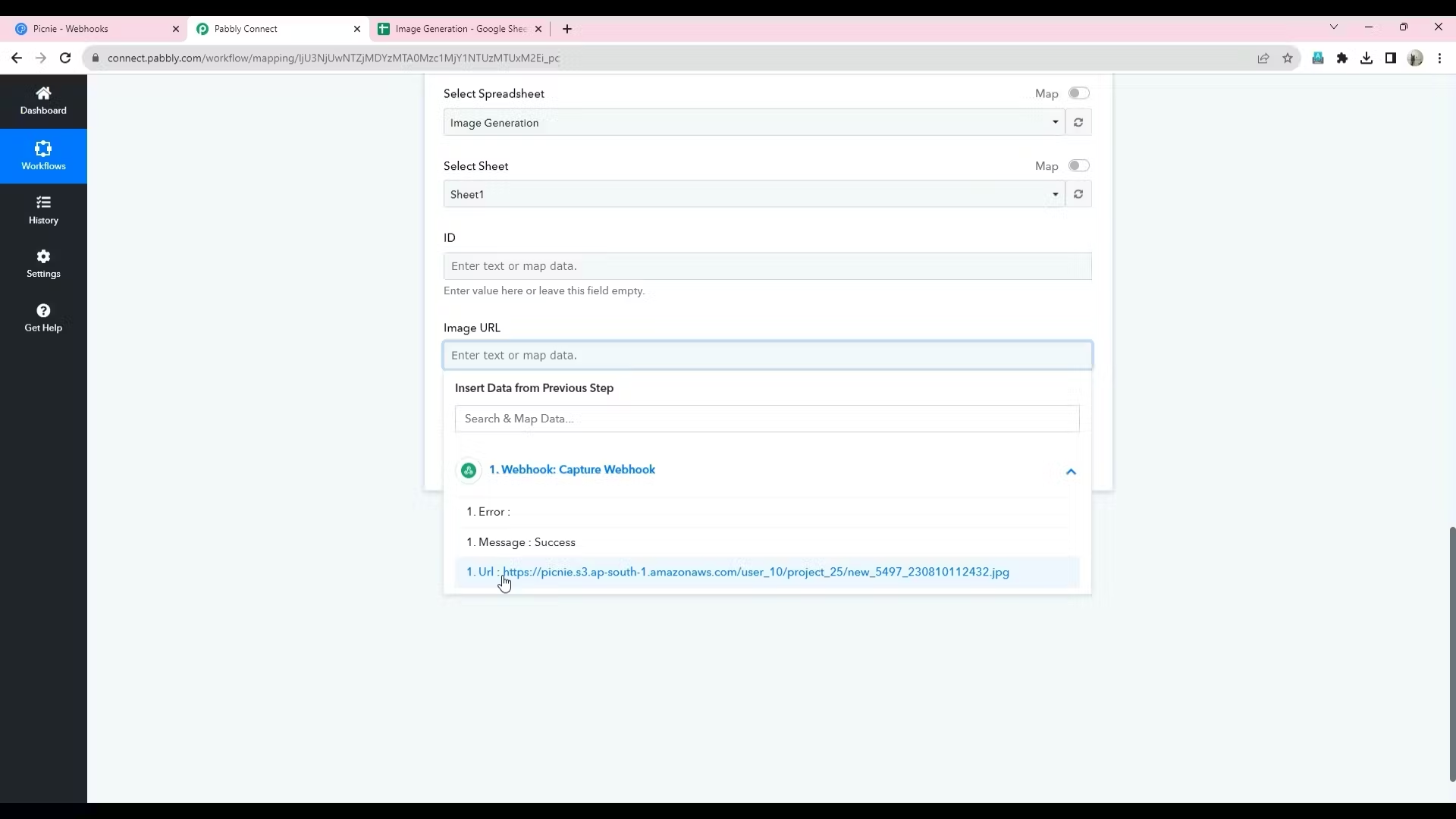
Step 10: Testing the Workflow
Click "Save & Send Test Request" to ensure everything is working as expected. This action will add a new row to your Google Sheet with the generated image URL.
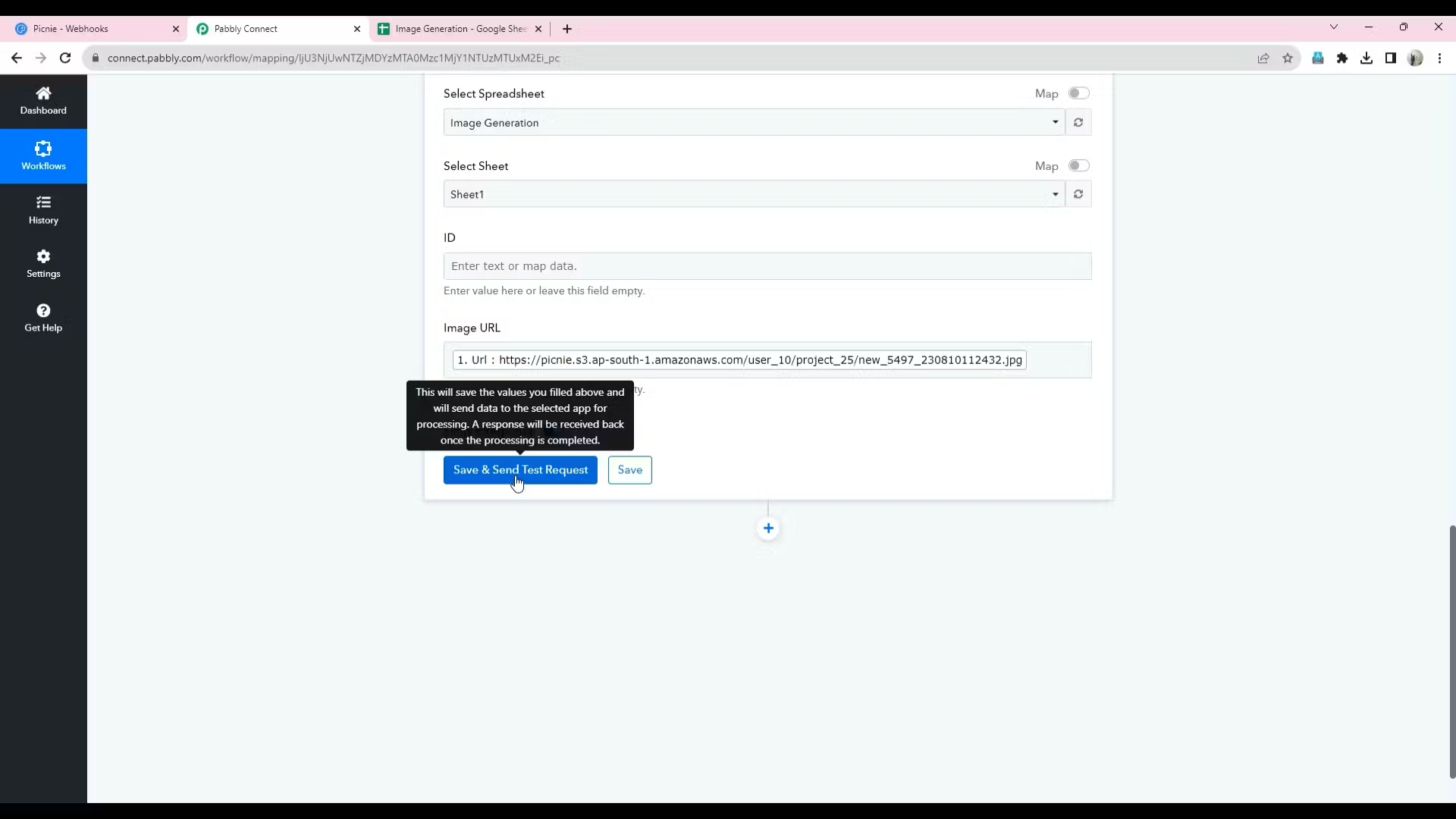
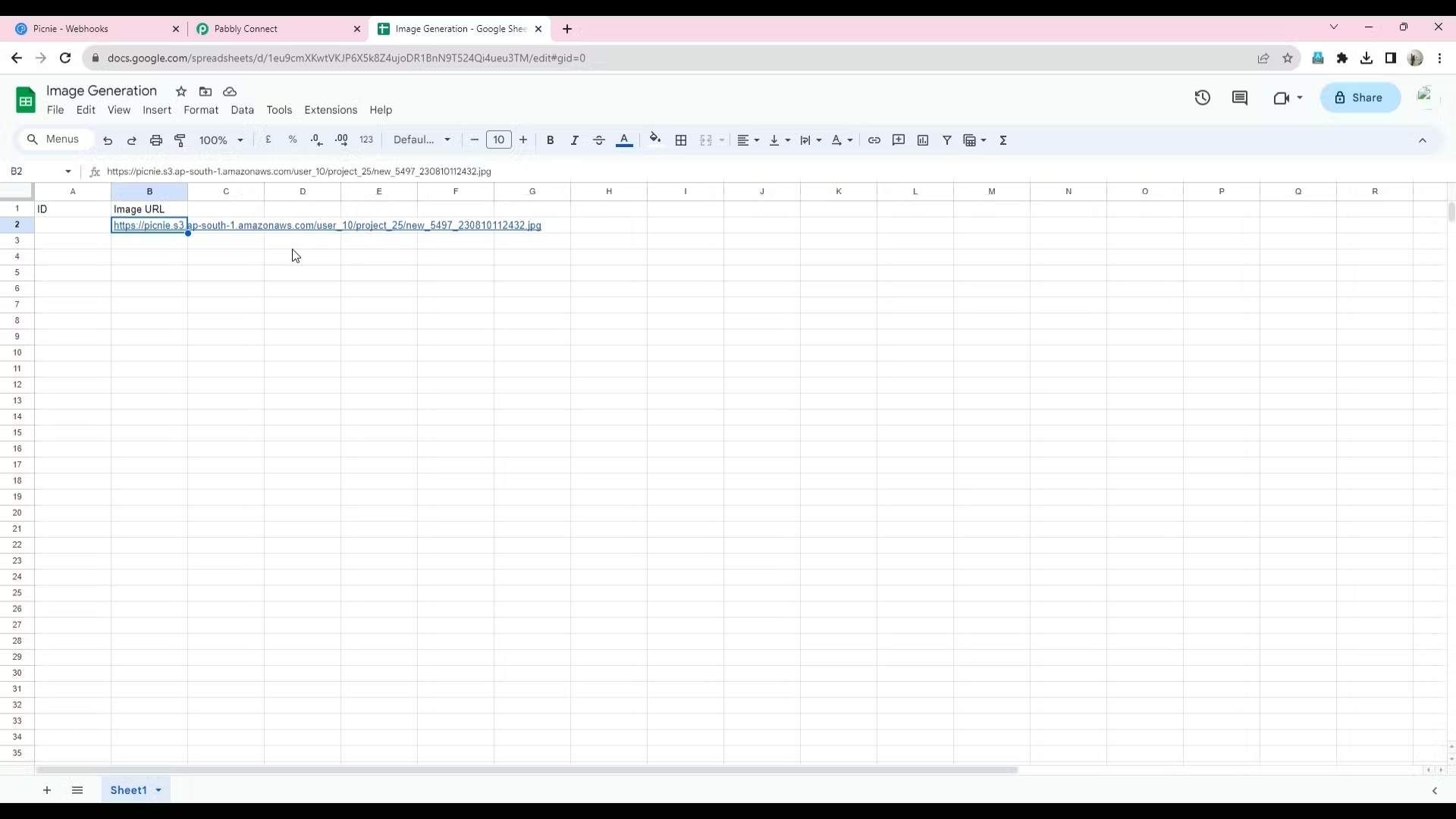
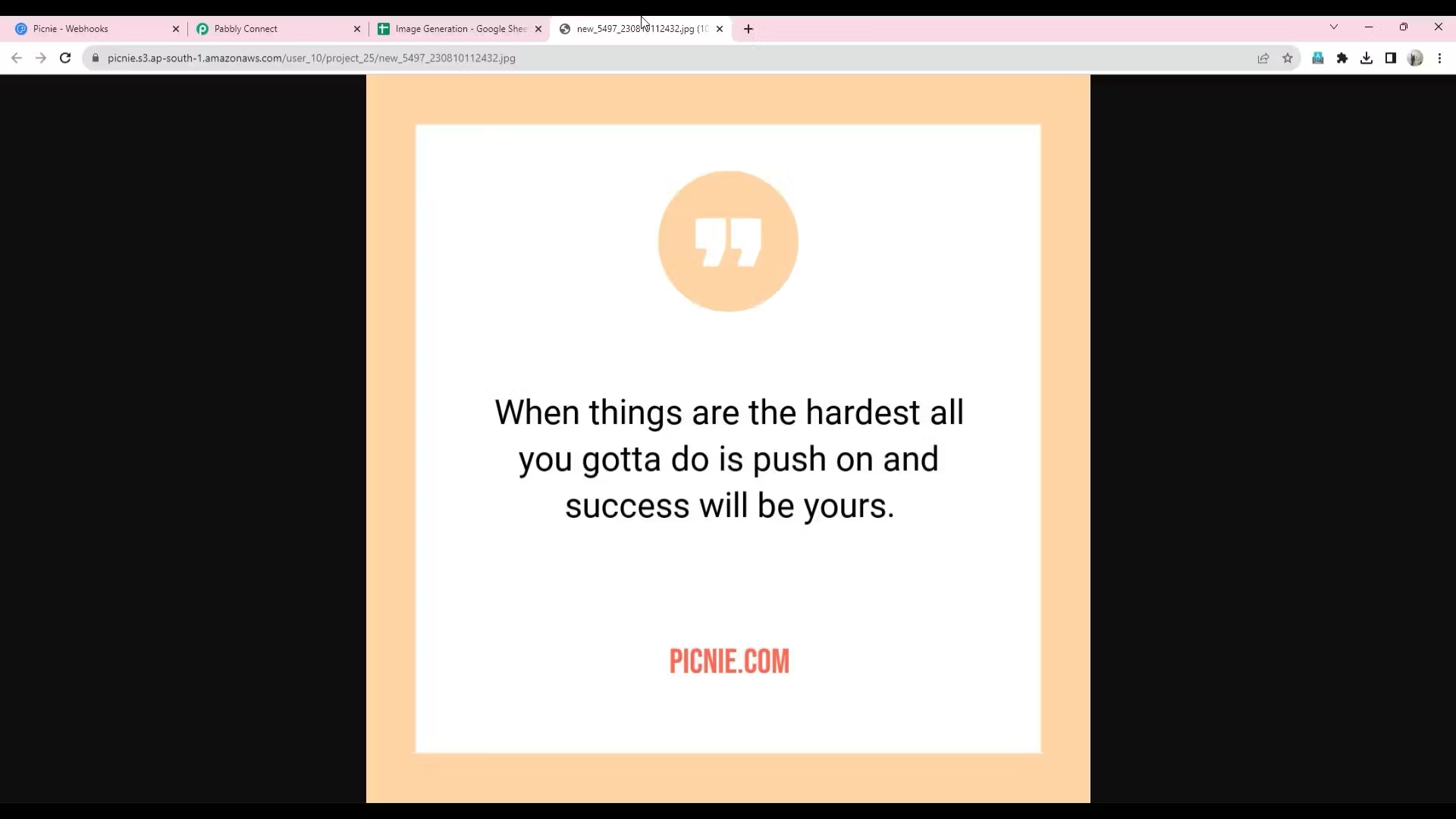
Step 11: Creating a Picnie Webhook
Return to the Picnie dashboard to set up your webhook. Choose the events that should trigger the webhook and specify the projects, or leave them blank for all events and projects.
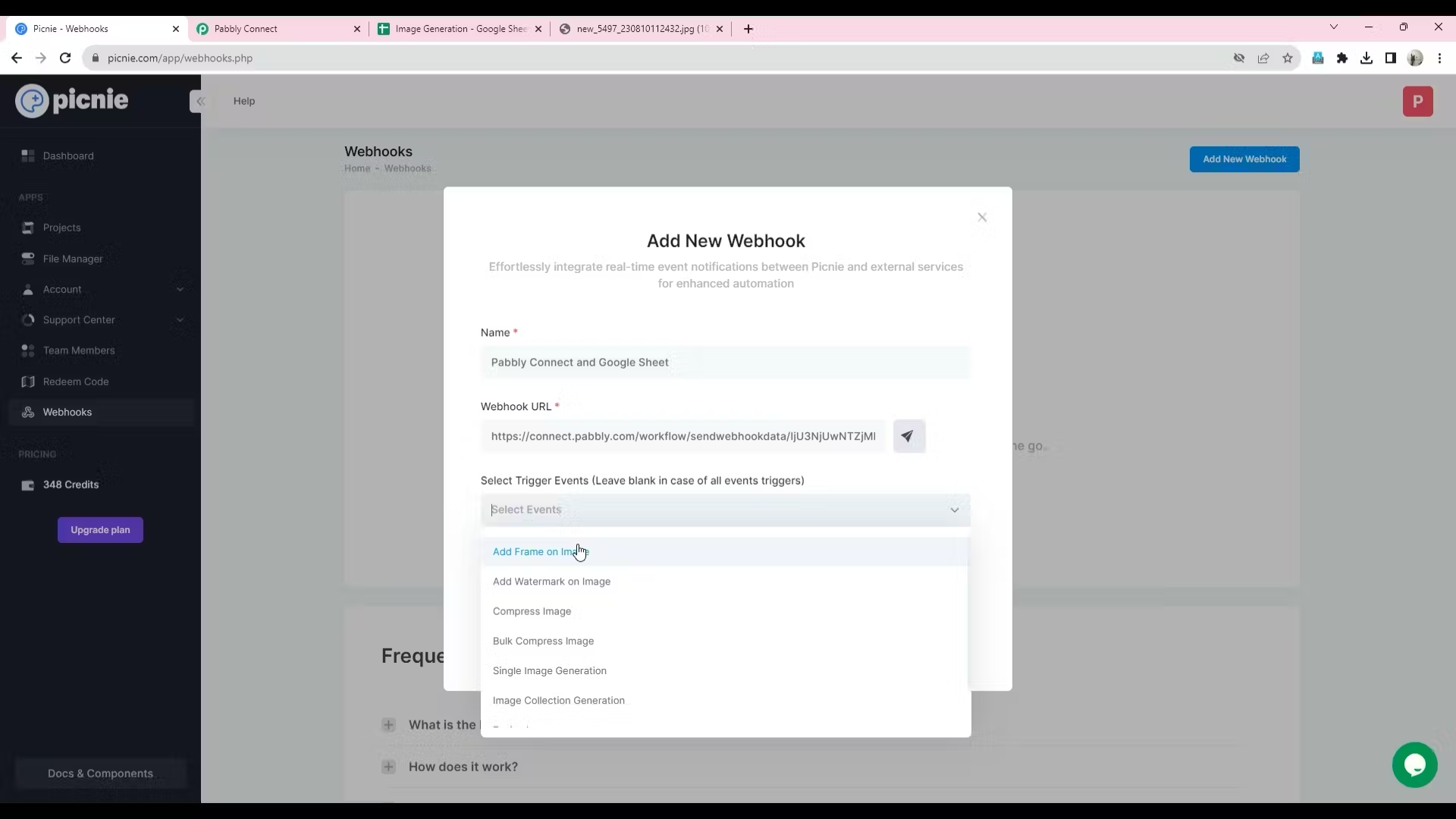
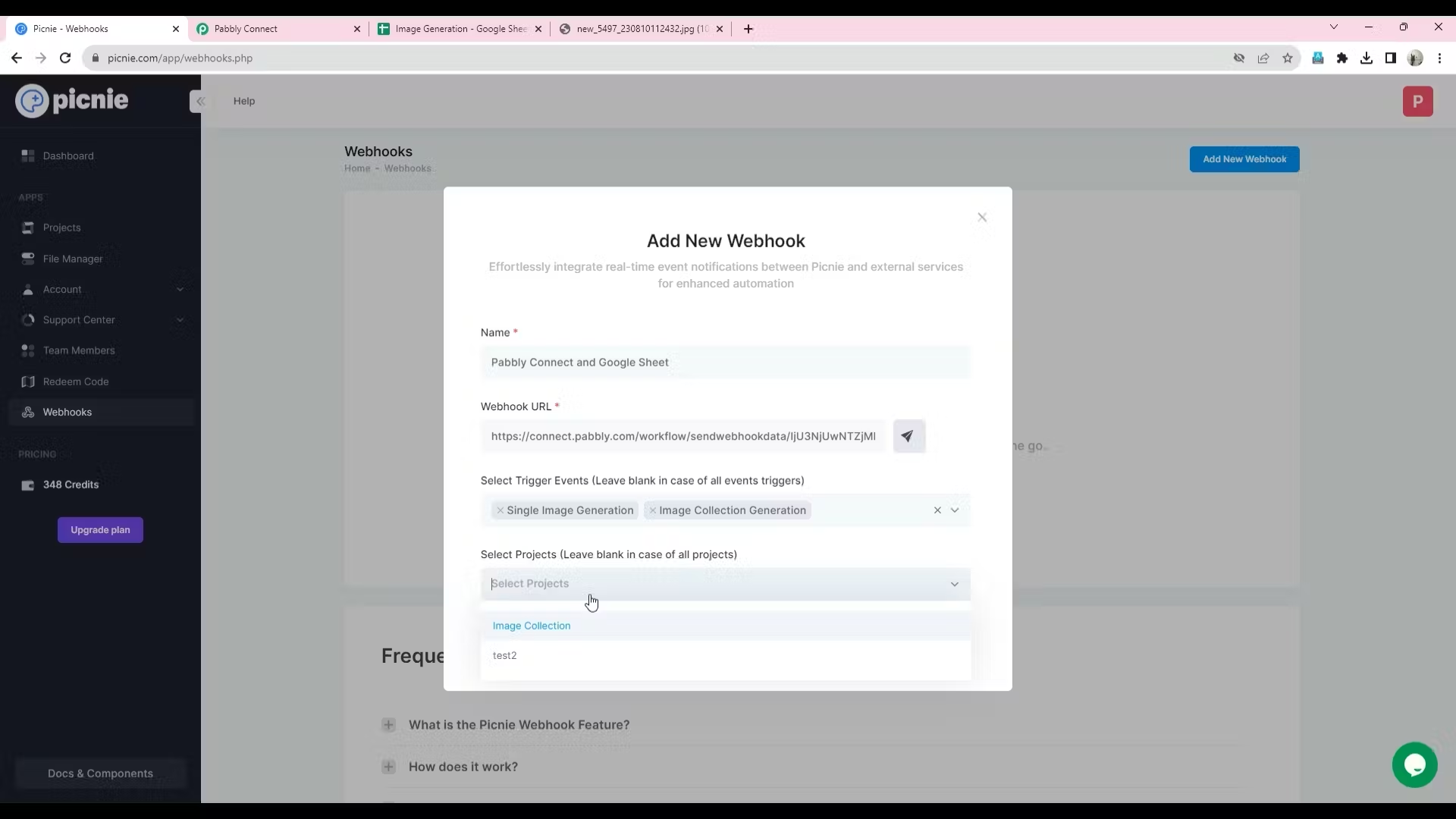
Click "Submit" to create the webhook.
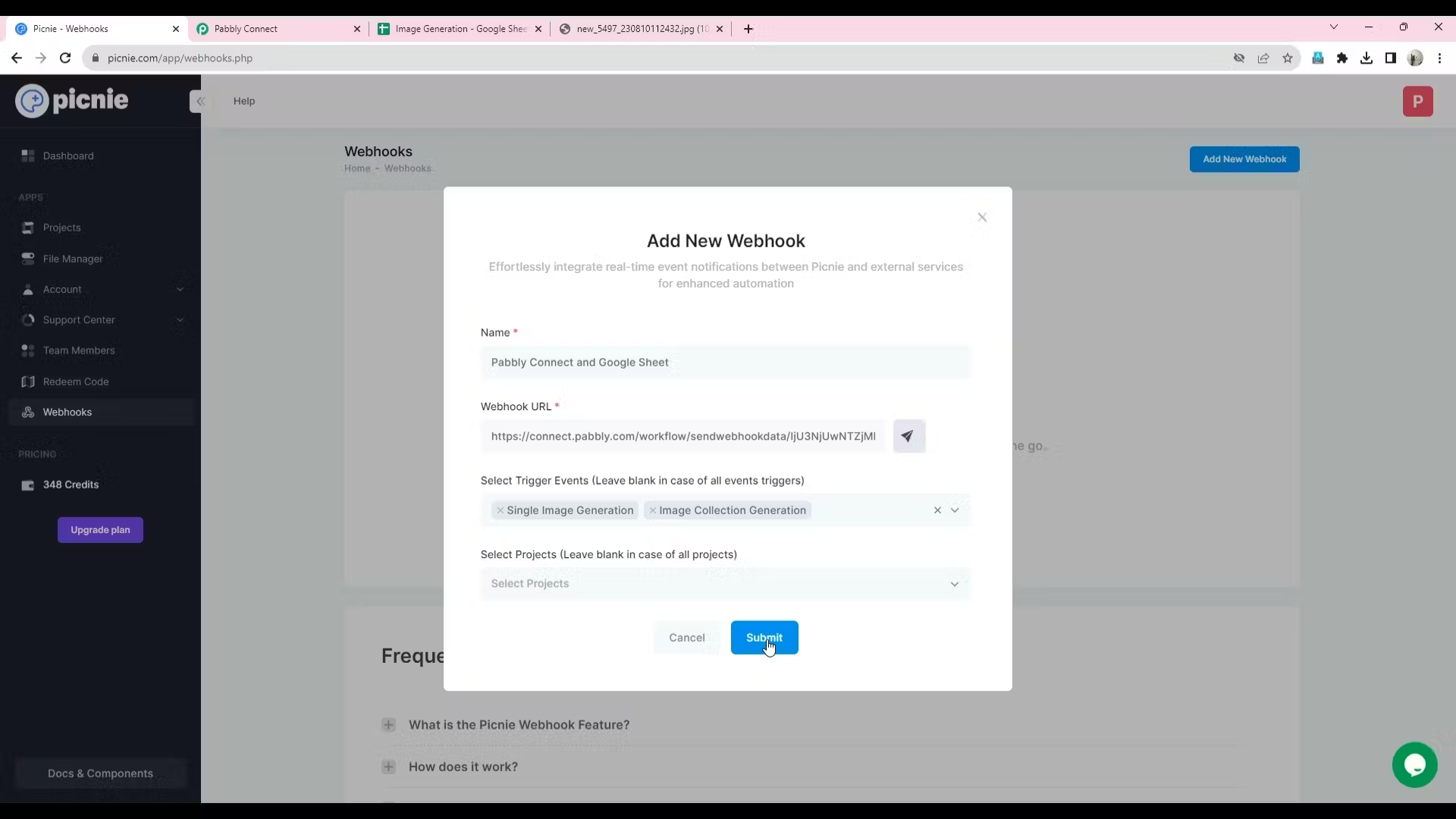
Step 12: Managing Webhooks
Your webhook is now created. In the Action button menu, you can access more details about the webhook, including its complete URL, events, and project settings.
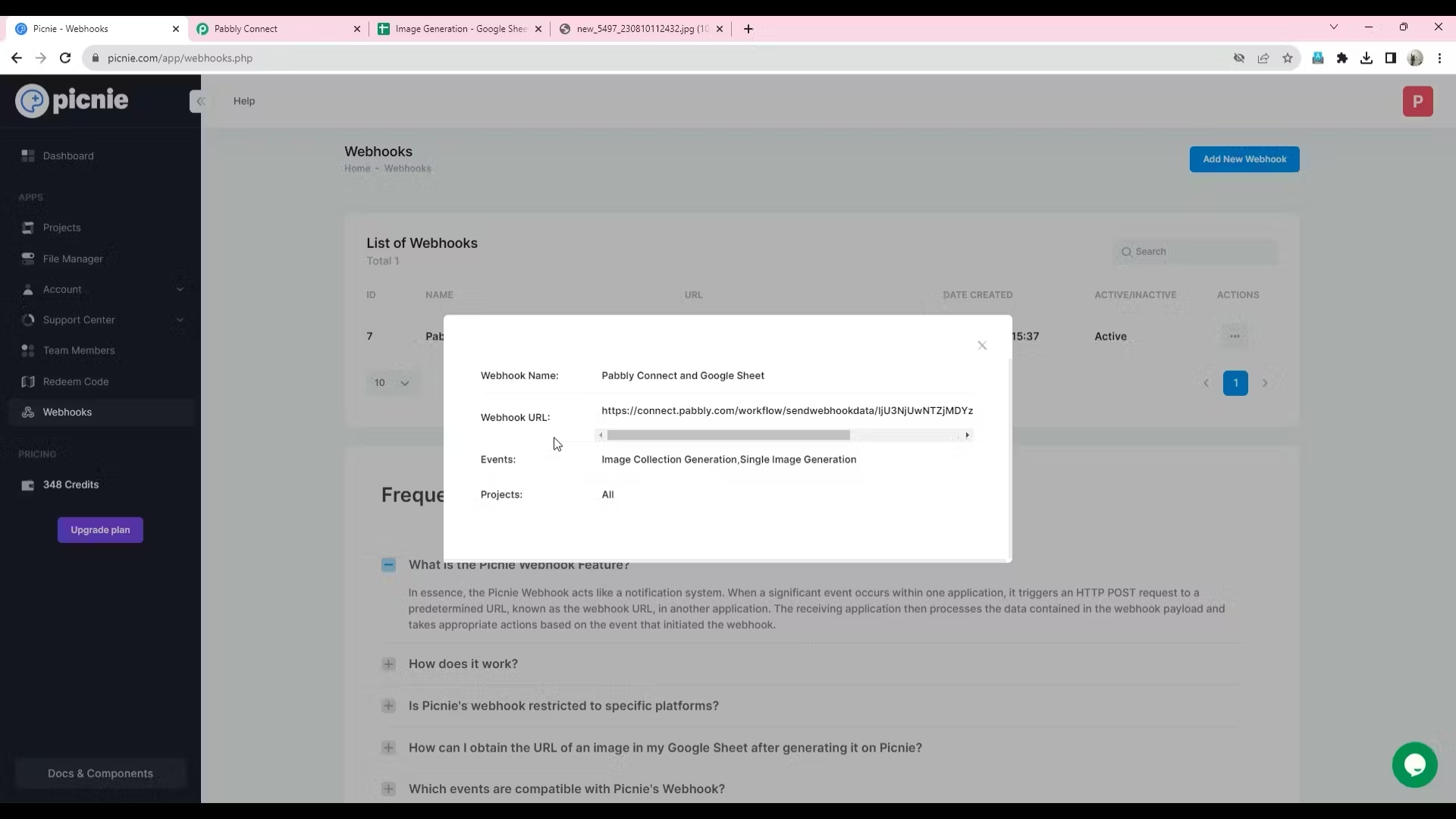
You also have the option to disable/enable, or delete the webhook as needed.
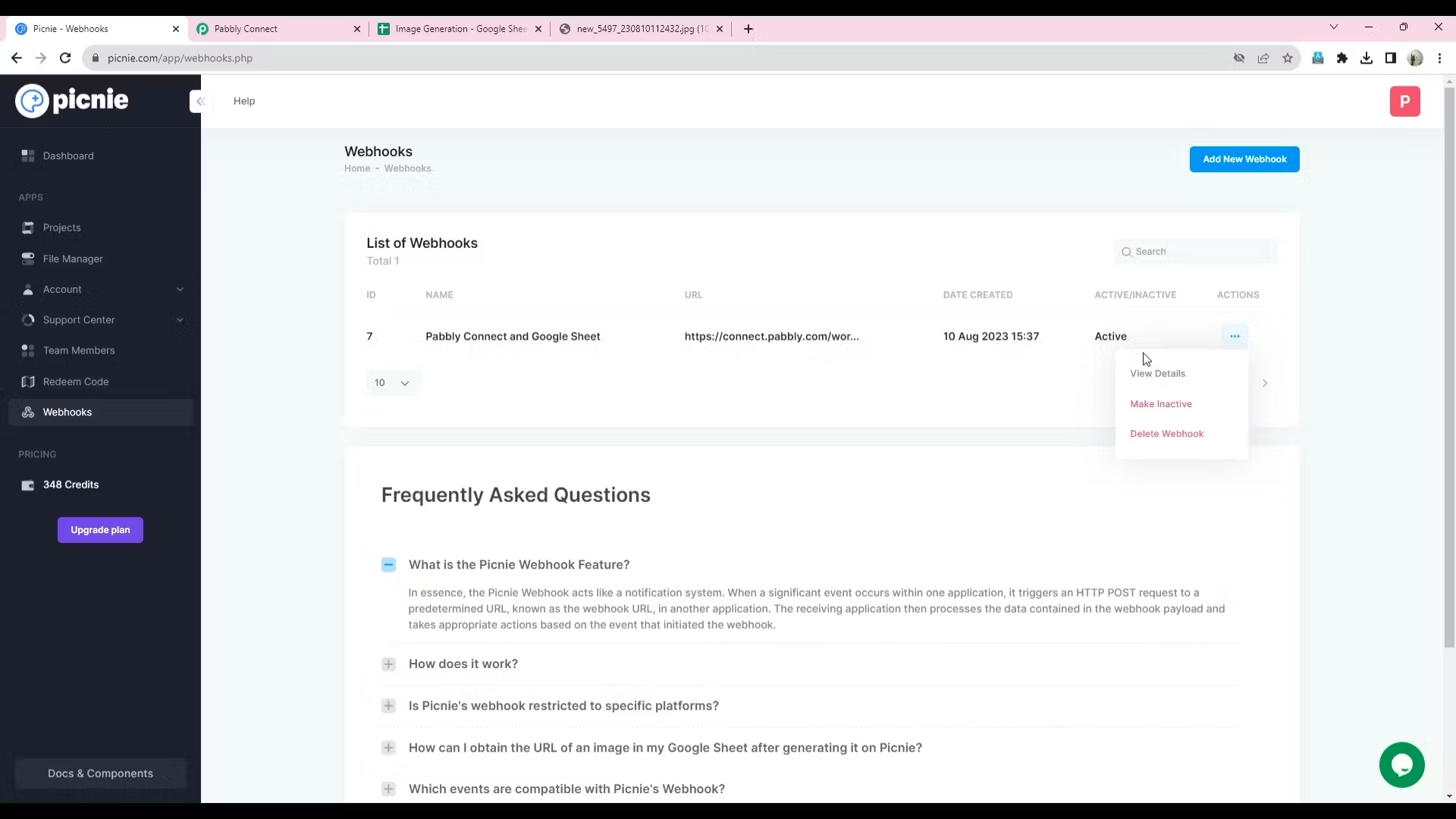
Step 13: Testing the Flow
To test the complete flow, navigate to the project screen, select a project, and access the Image Generation Tool.
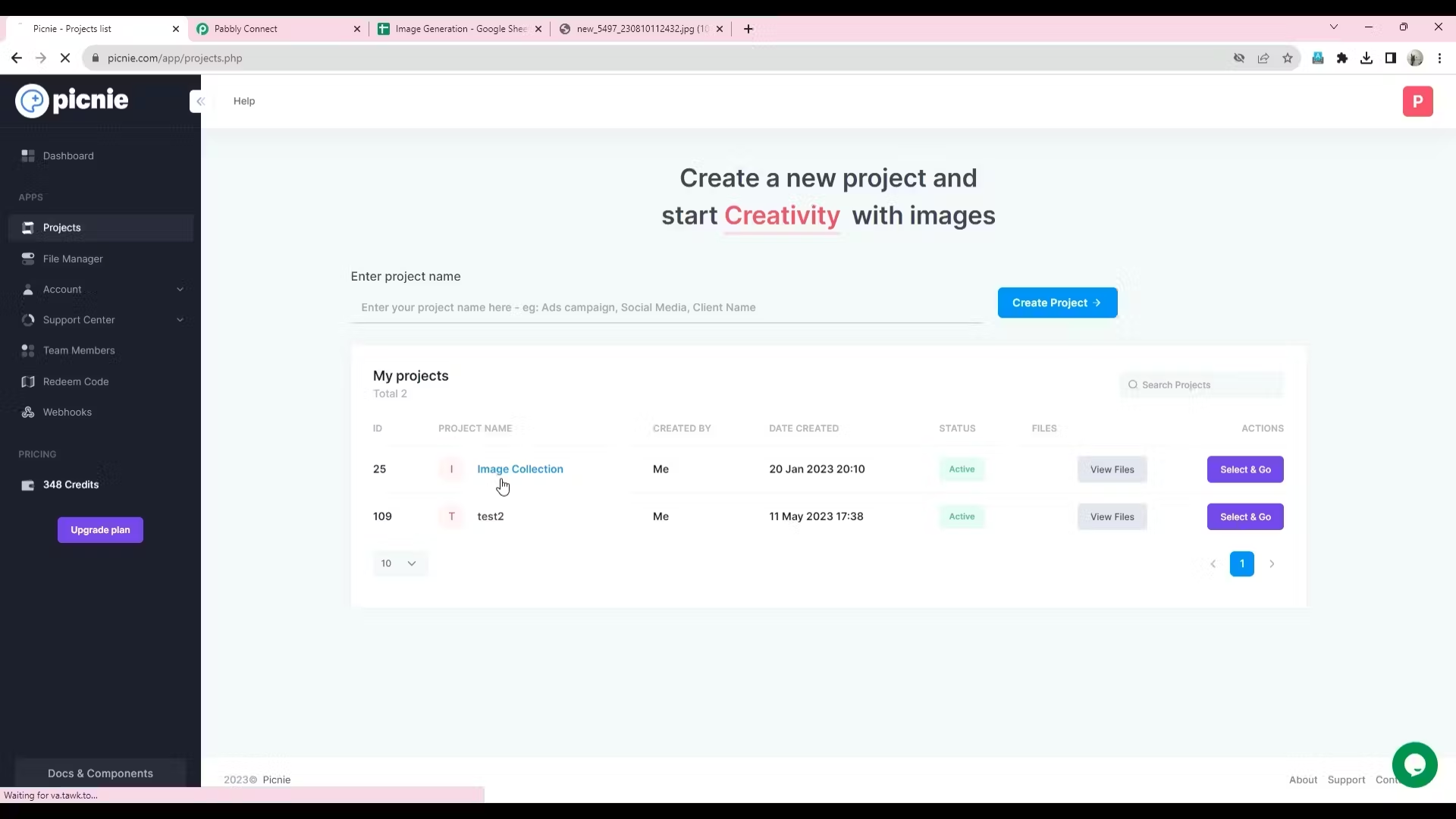
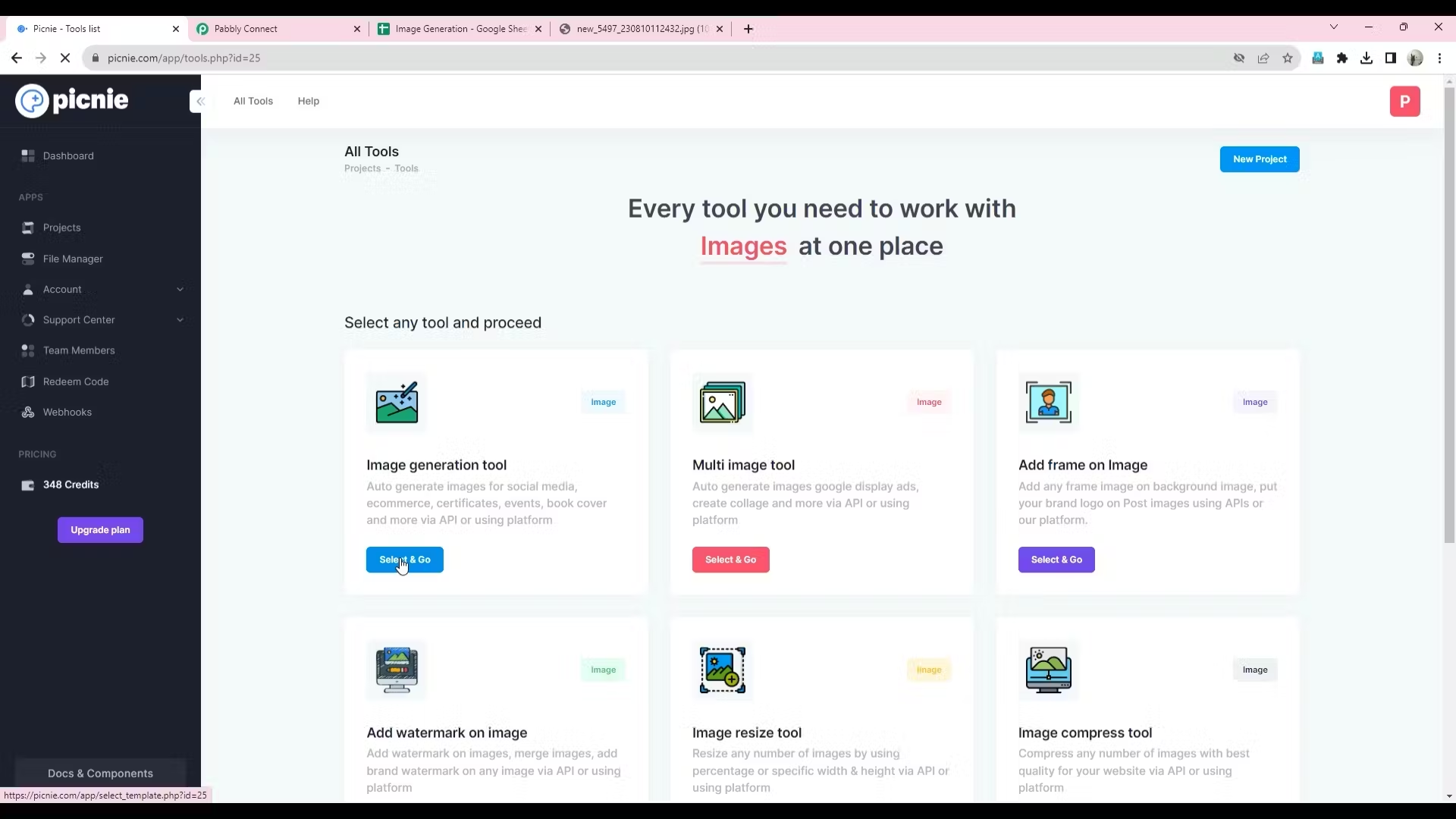
Choose a template and generate an image. You will see the generated image URL added as a new row in your Google Sheet.
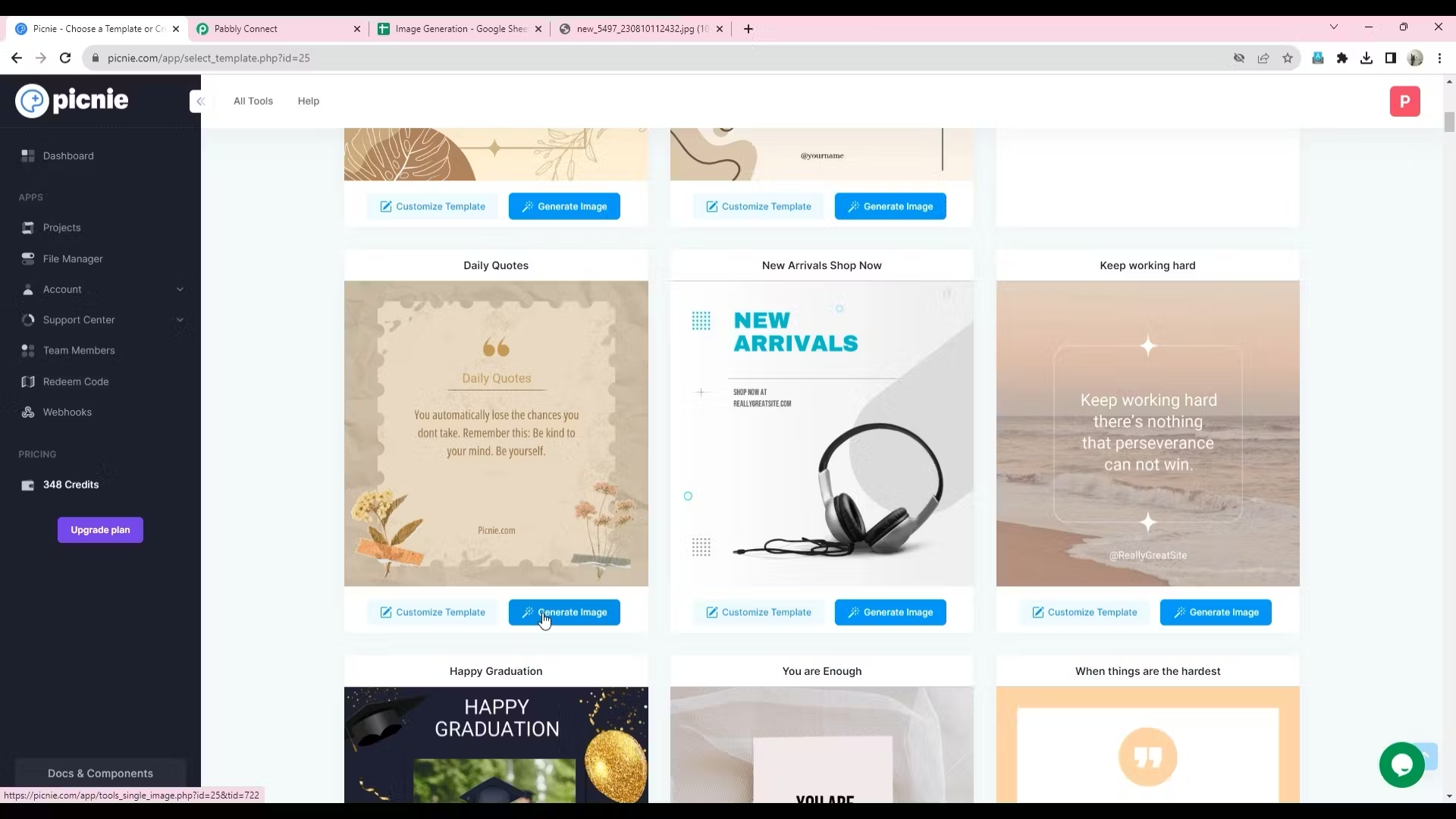
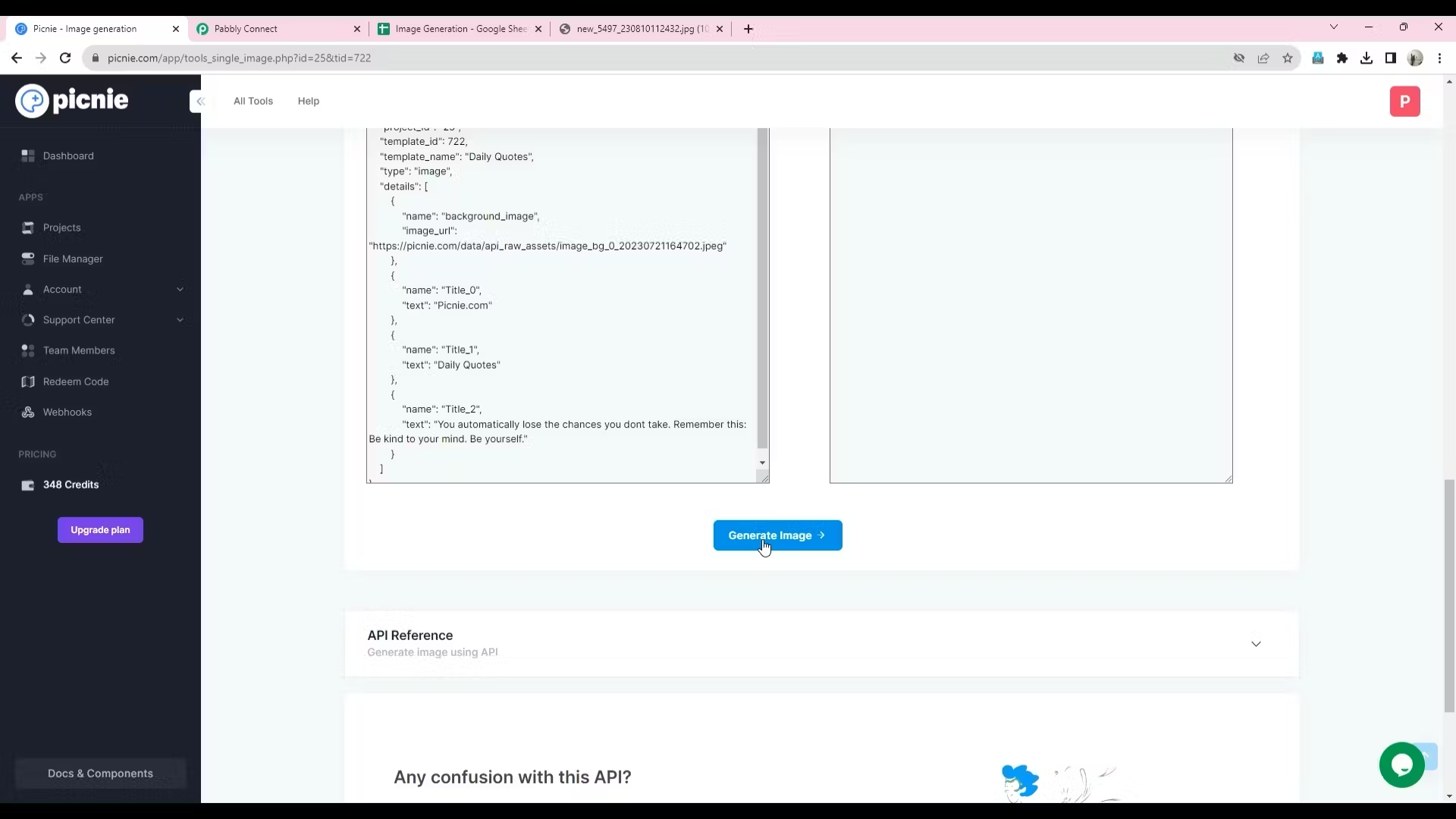
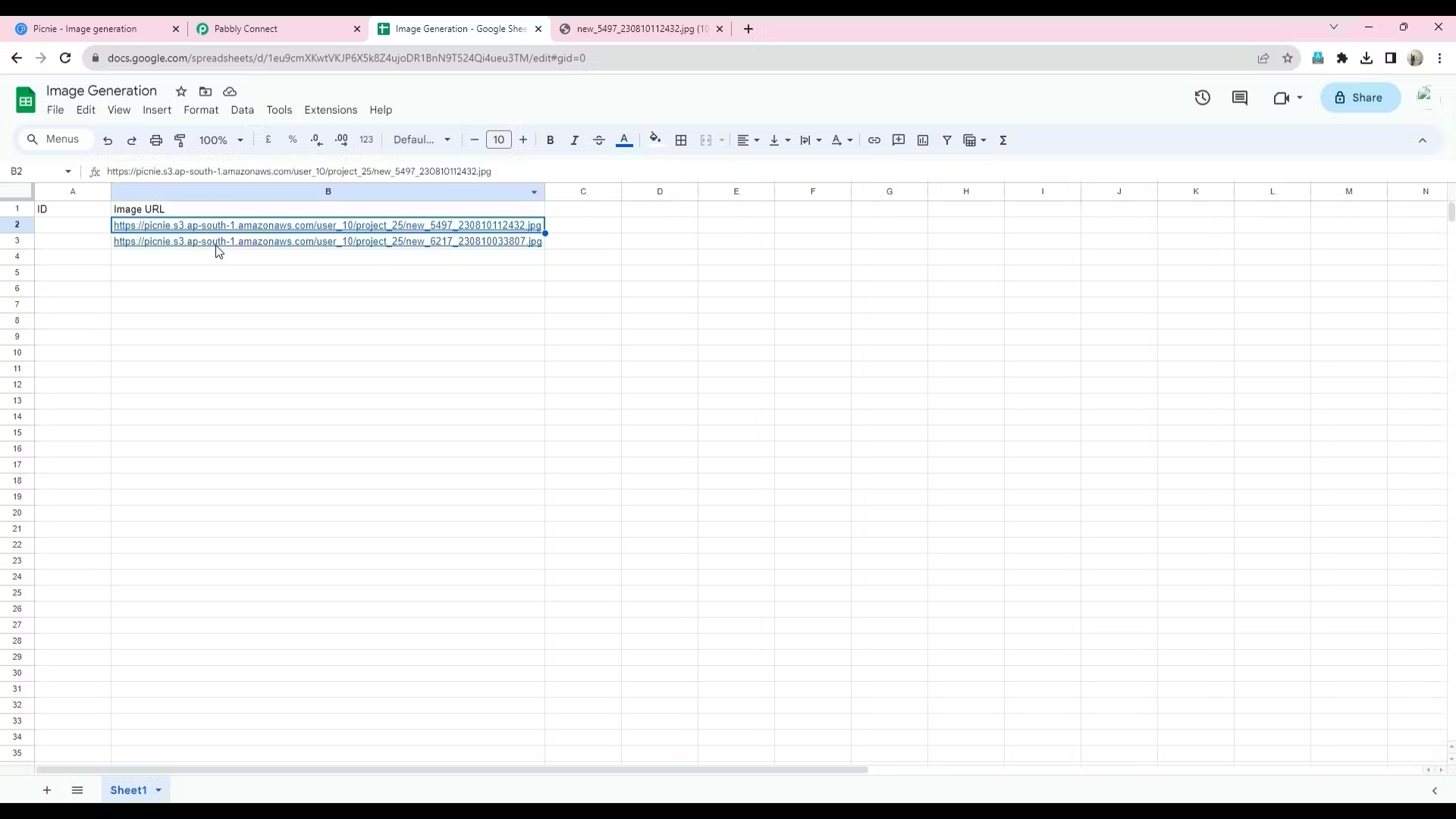
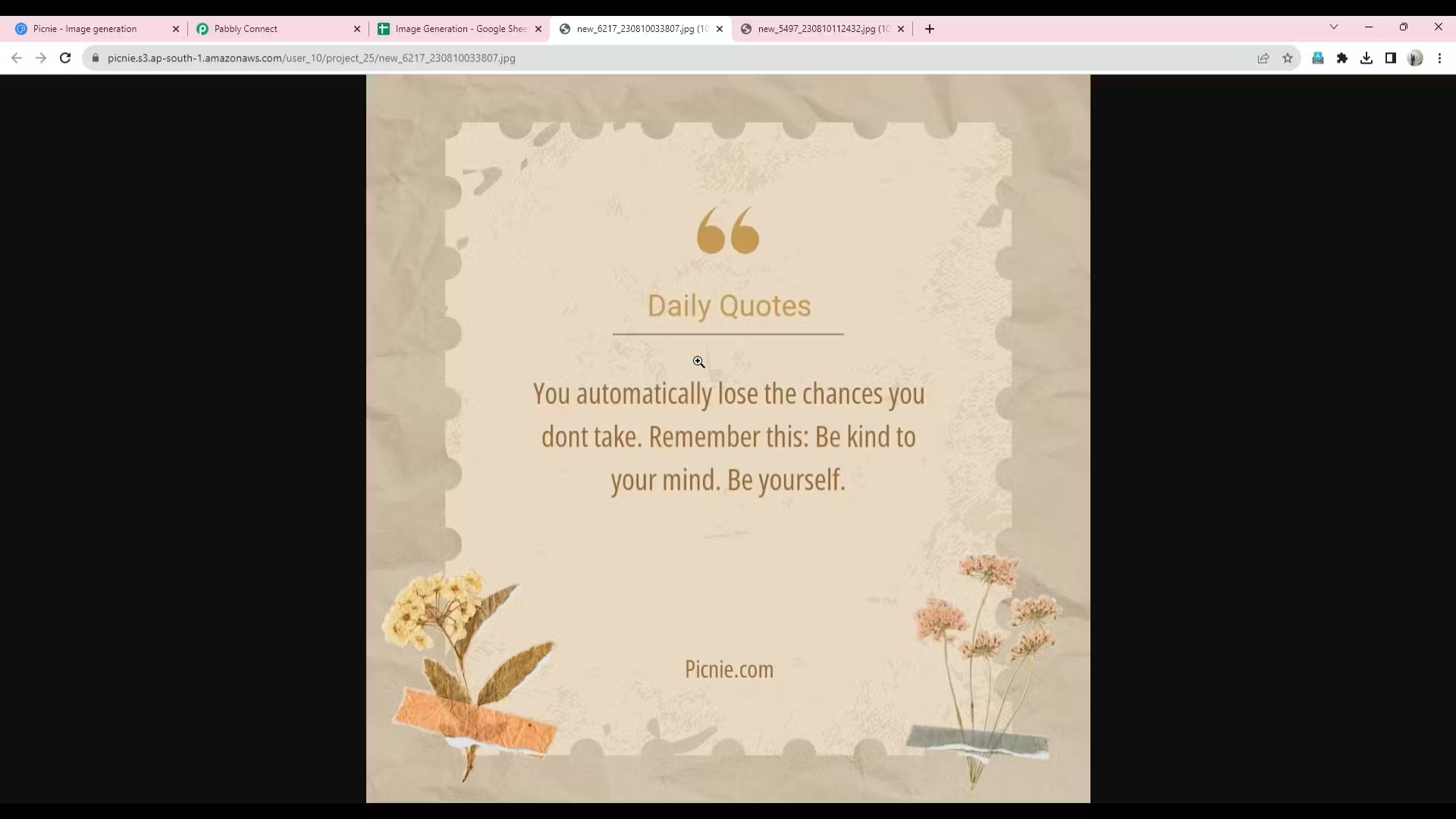
Step 14: Expanding to Other Platforms
Similarly, if you want to share generated images on other platforms, search for the desired application within Pabbly Connect and create connections to automate the process. You can easily post images to Instagram, Facebook, and various social platforms.
Conclusion:
With the integration of Picnie and Pabbly Connect, image generation becomes a streamlined, automated process. Images can be stored, shared, and utilized effortlessly. This guide has empowered you to connect multiple applications, automate image generation, and take your creative endeavours to the next level. Thank you for joining us on this journey with Picnie!
